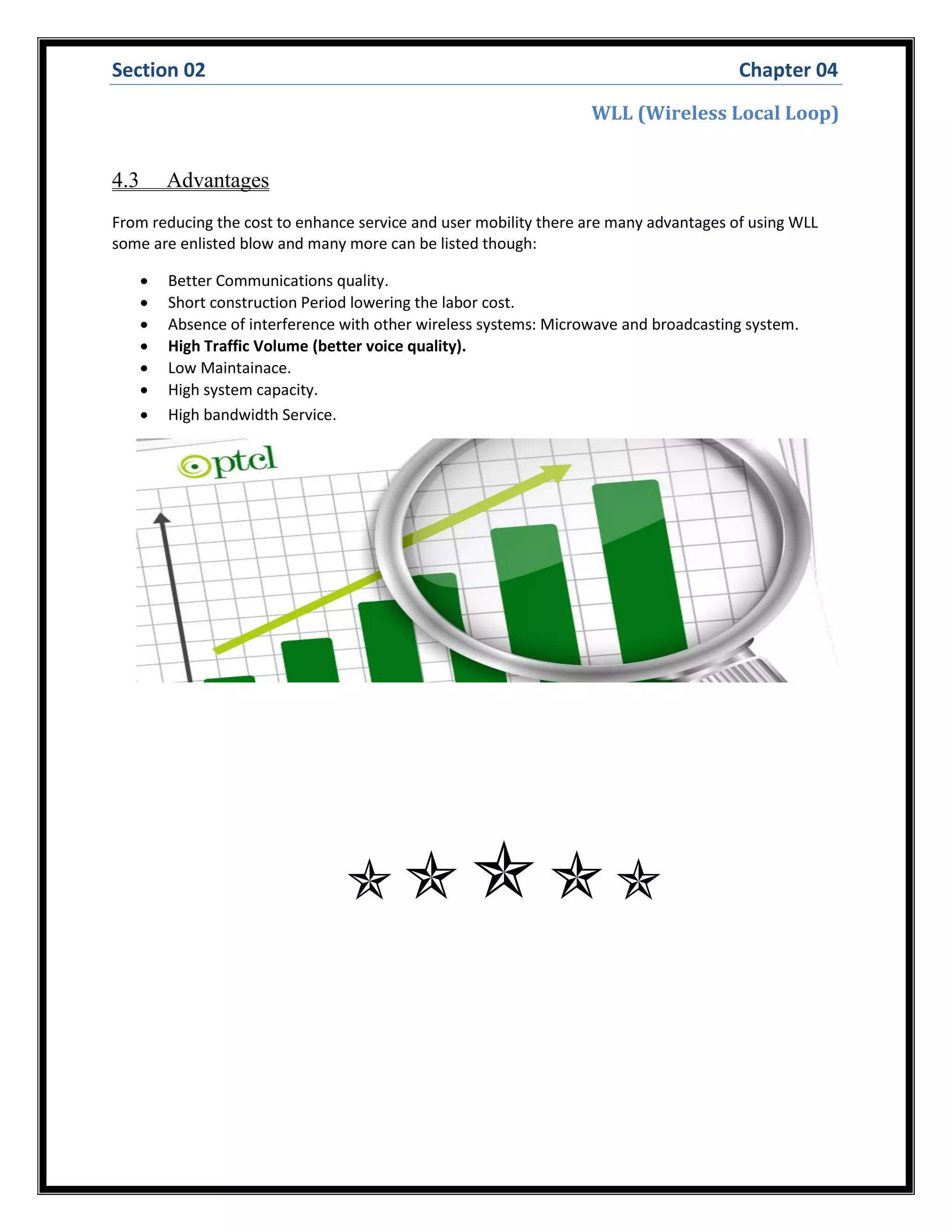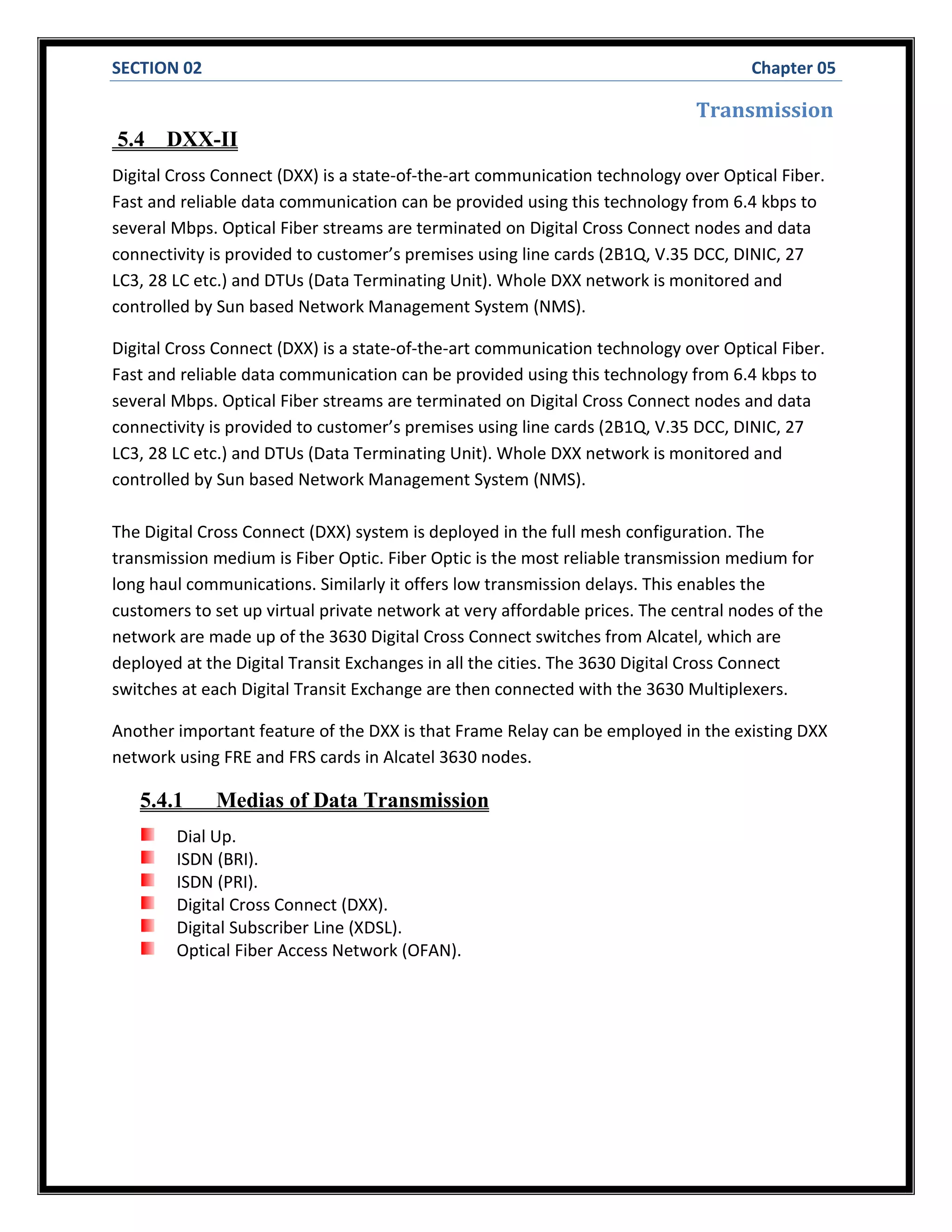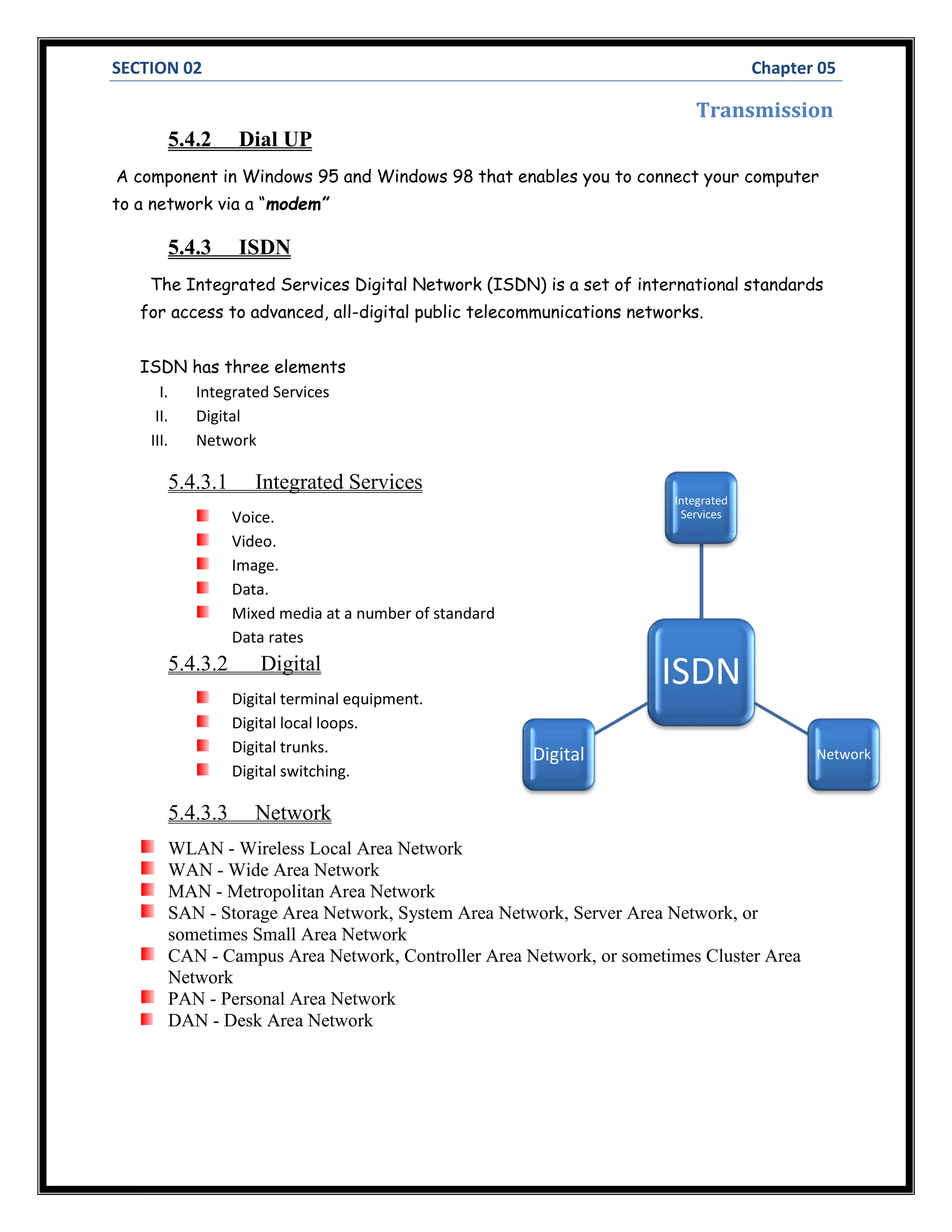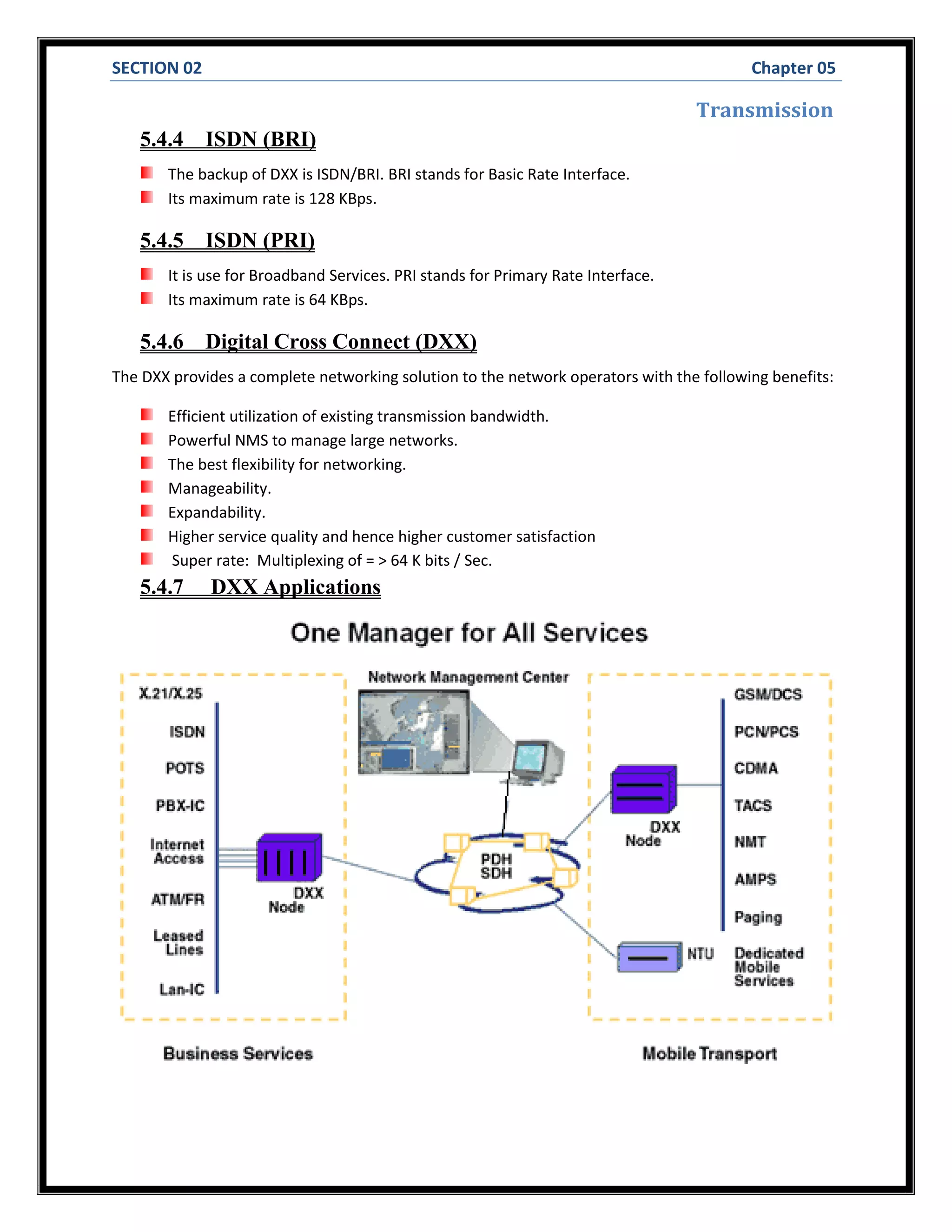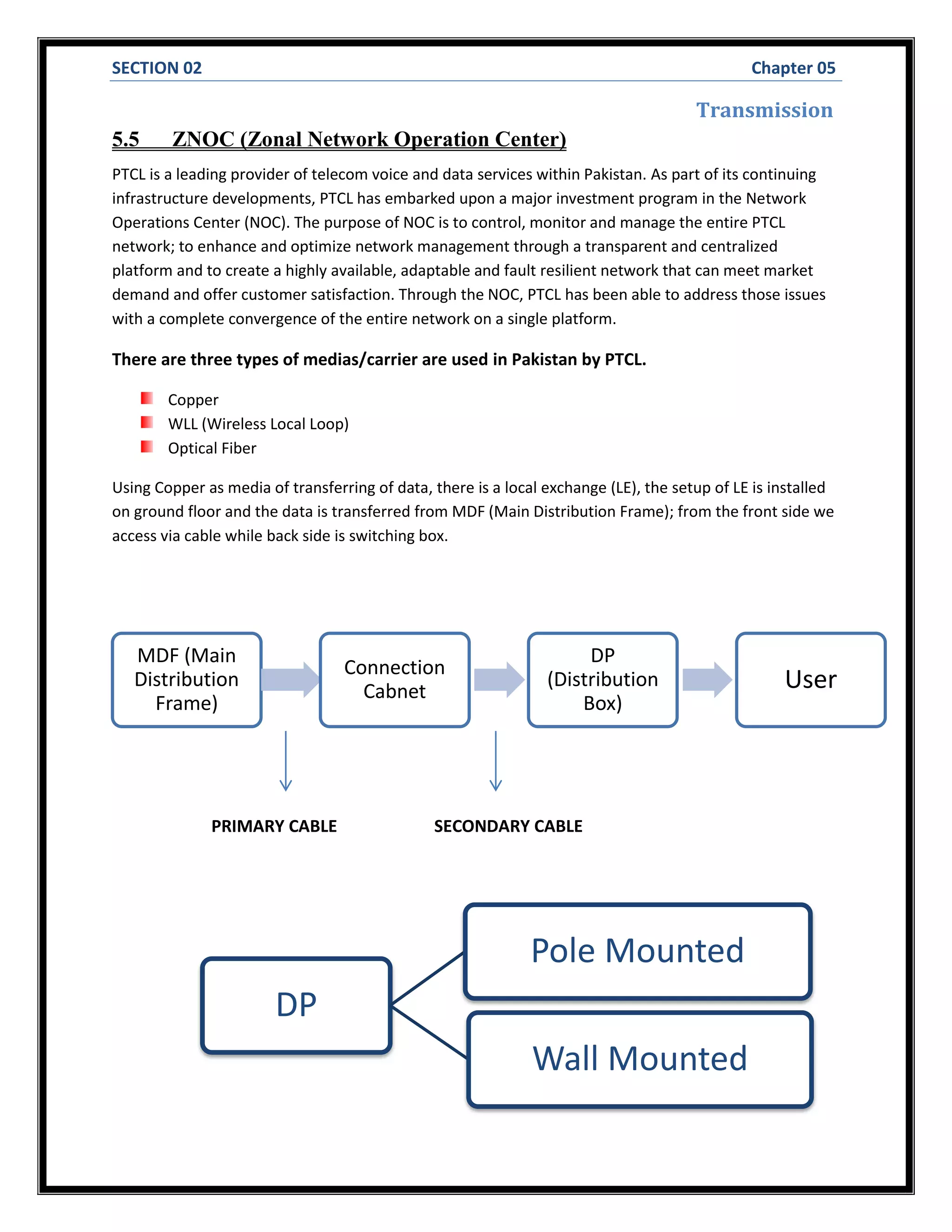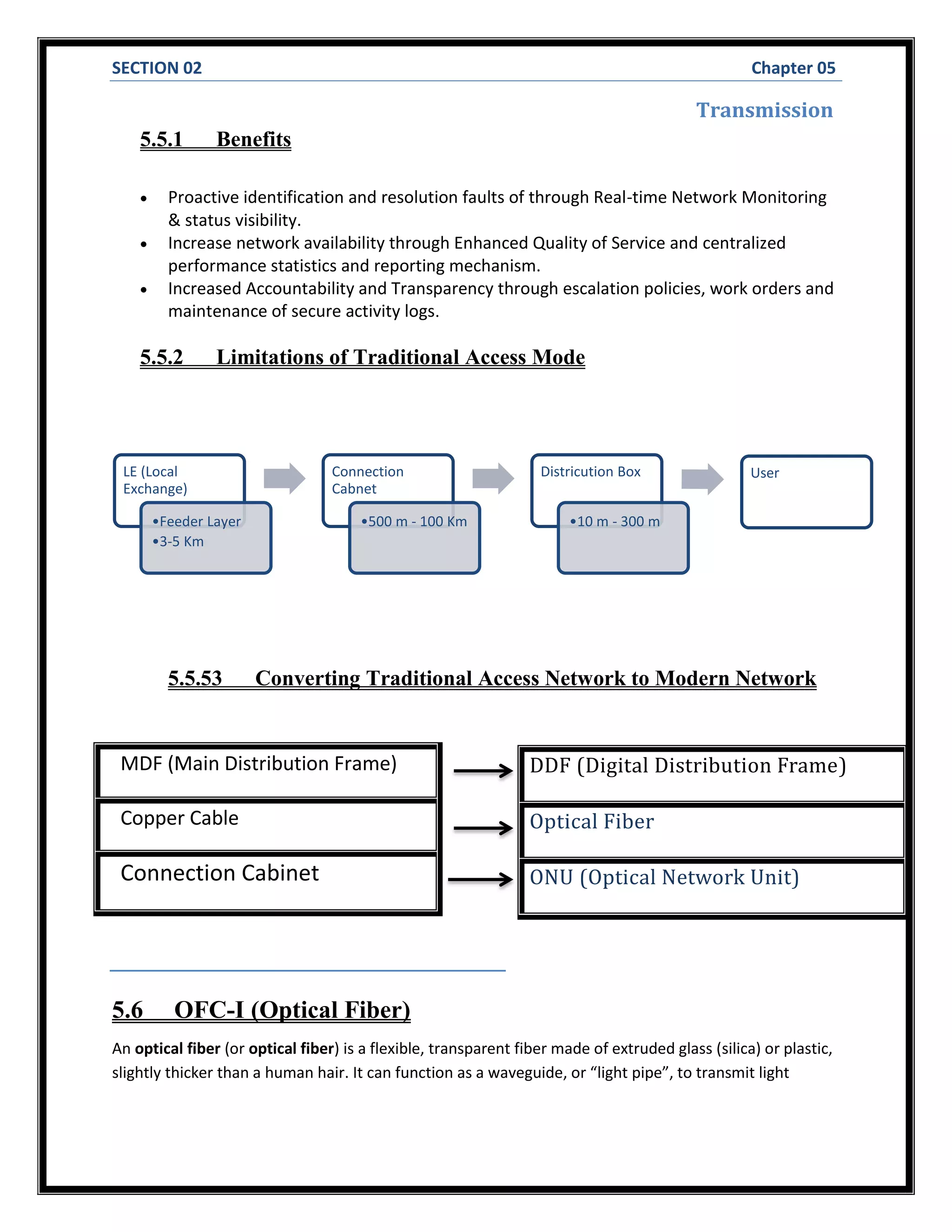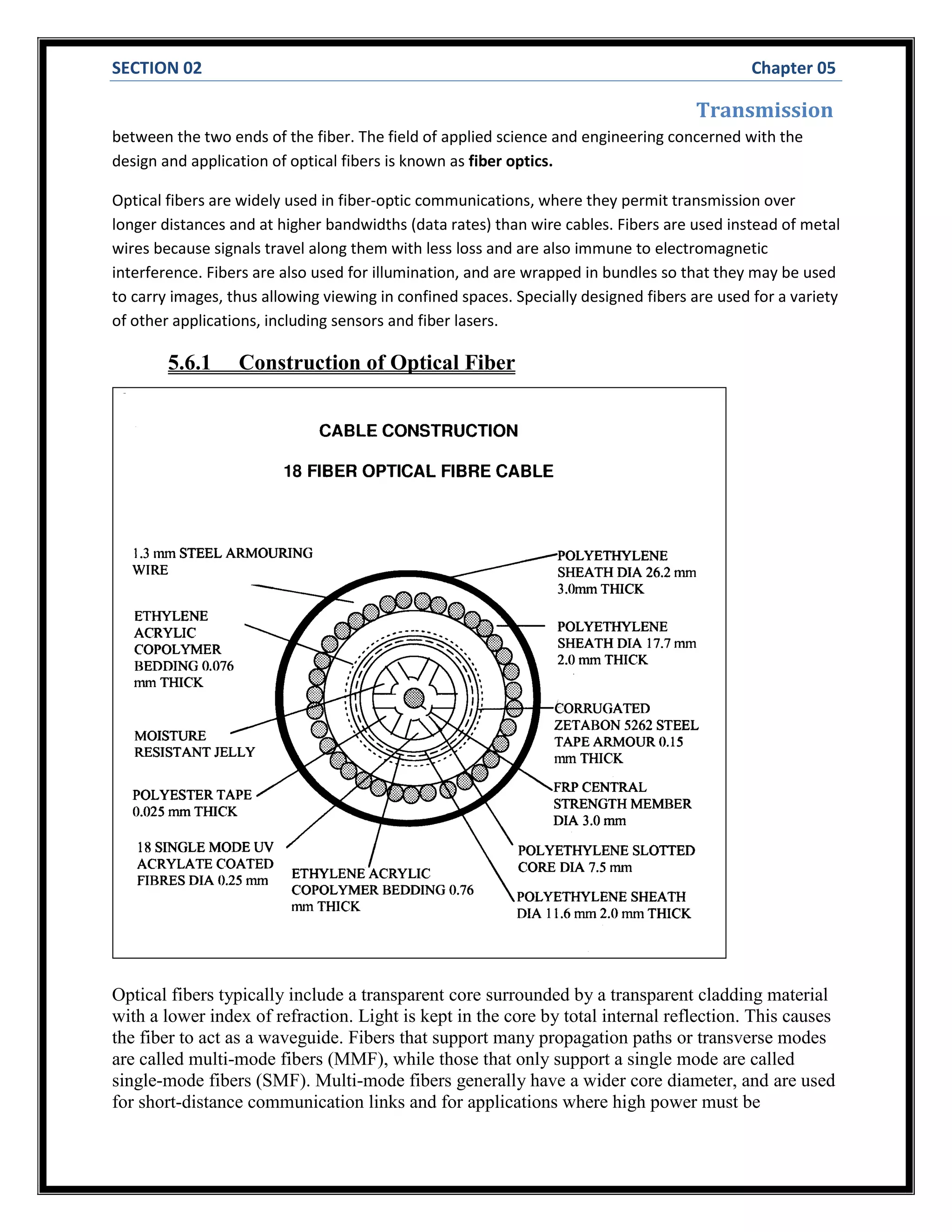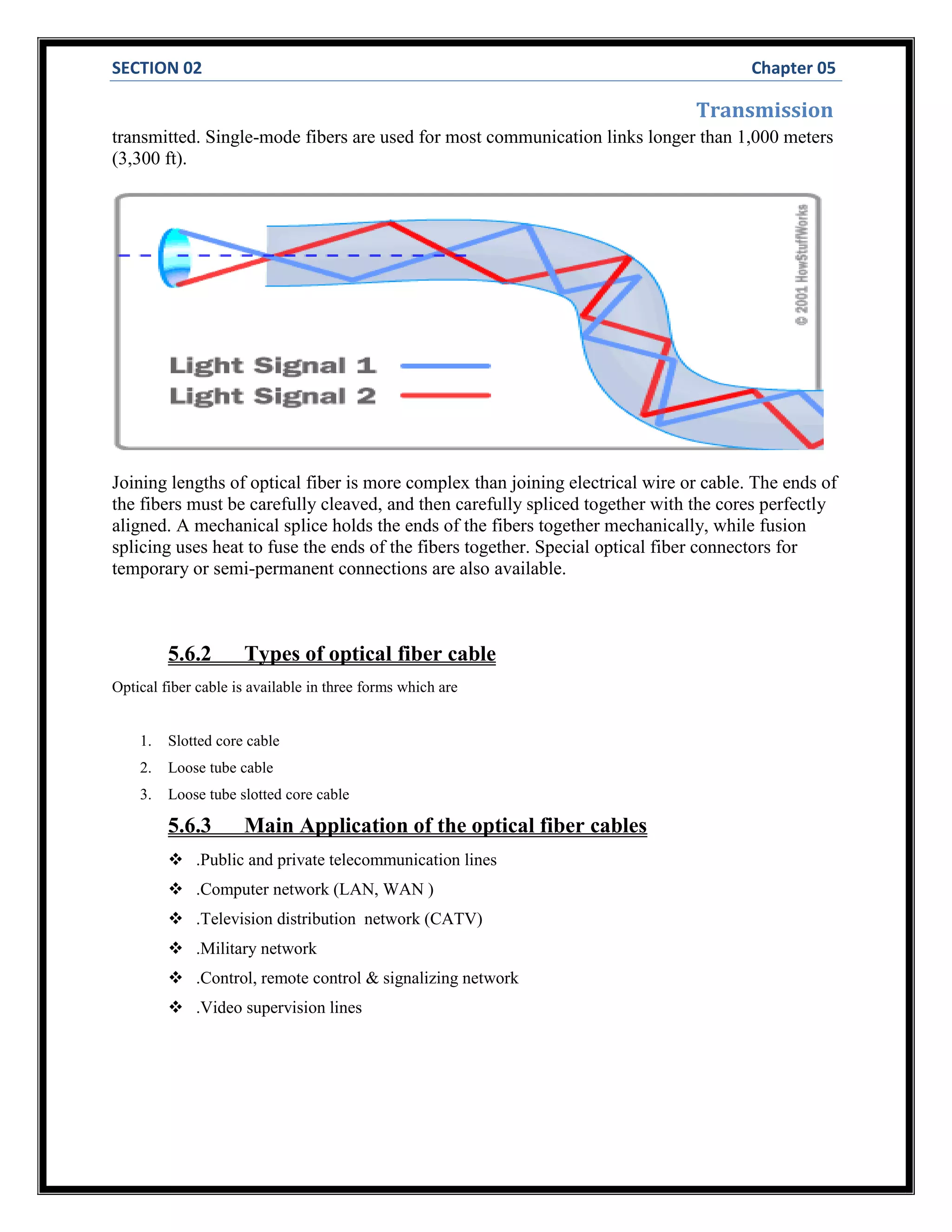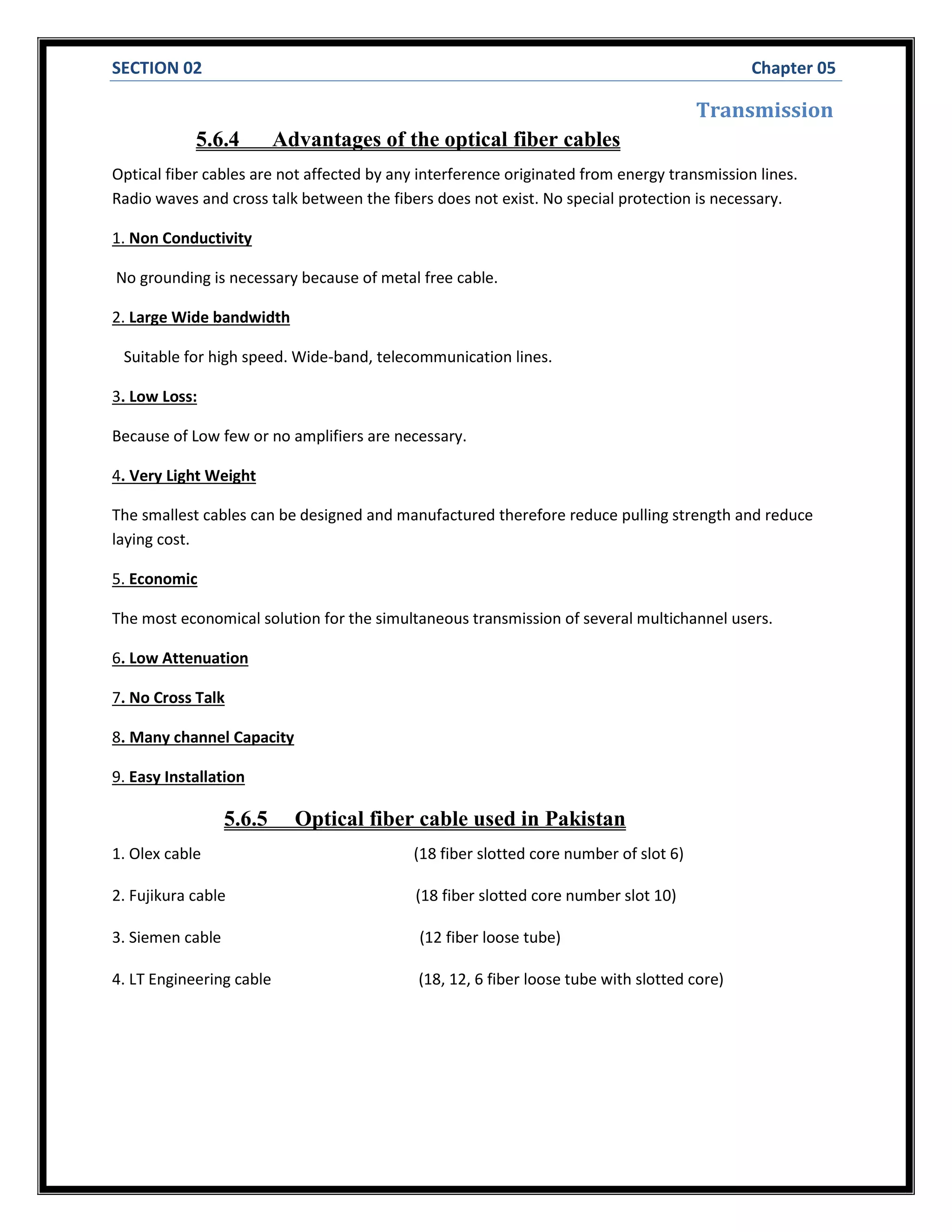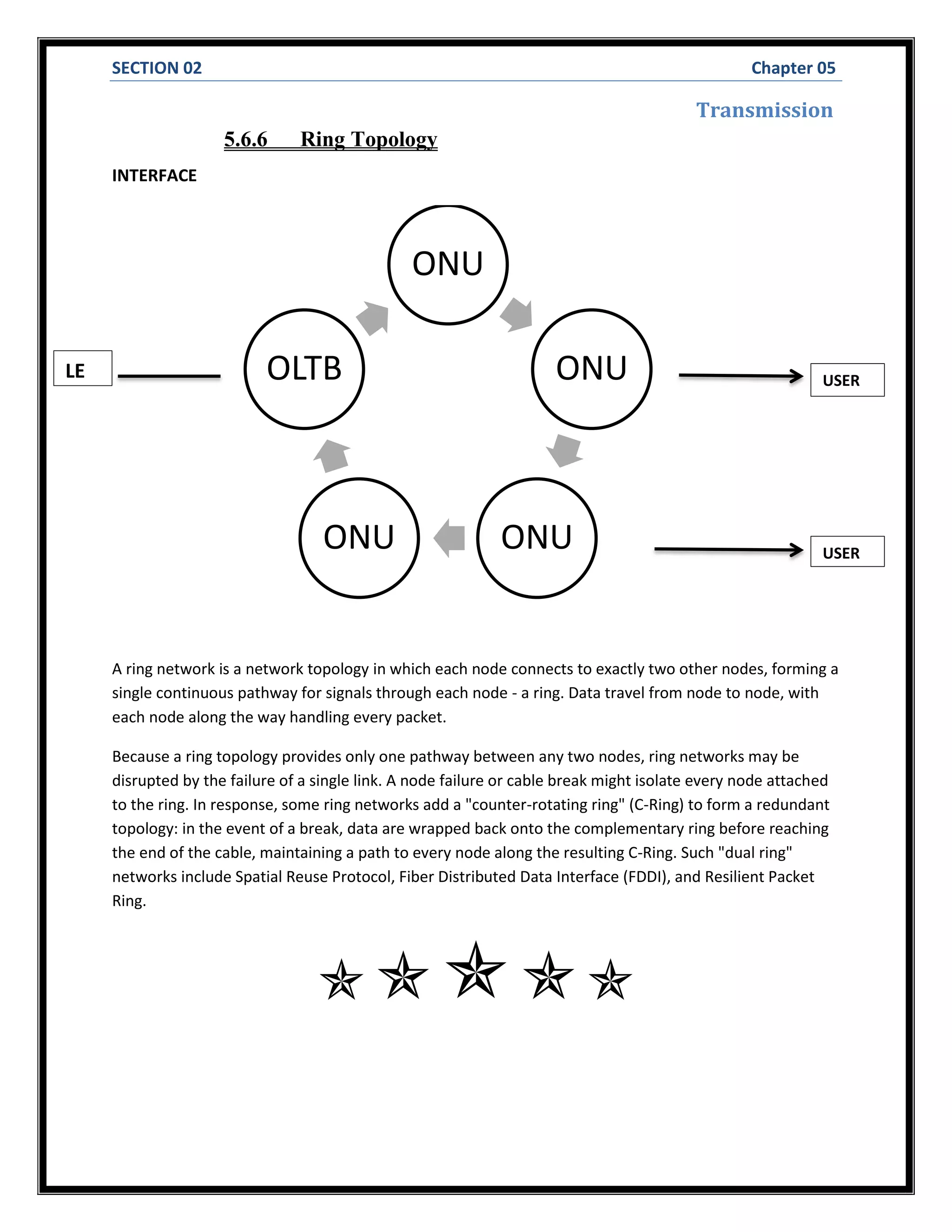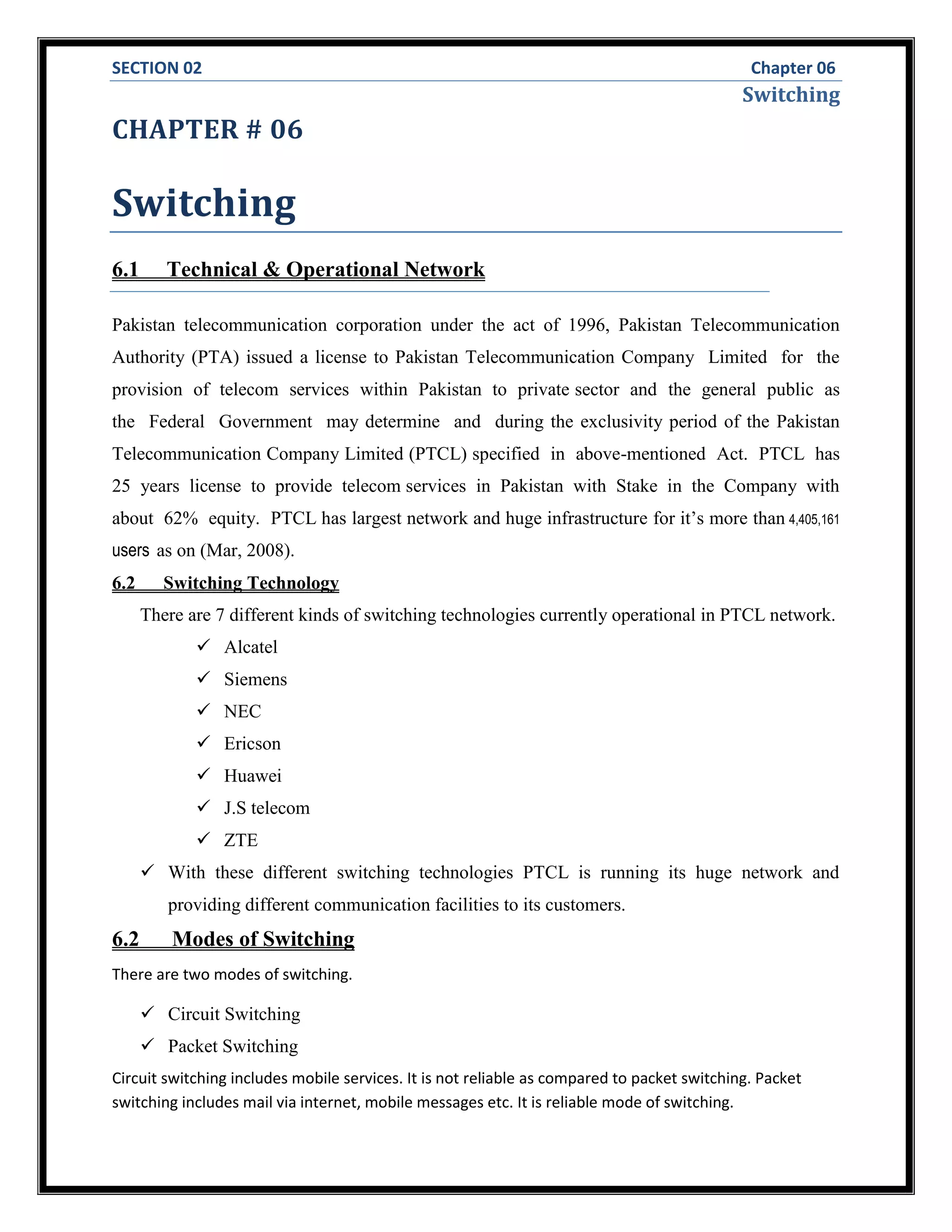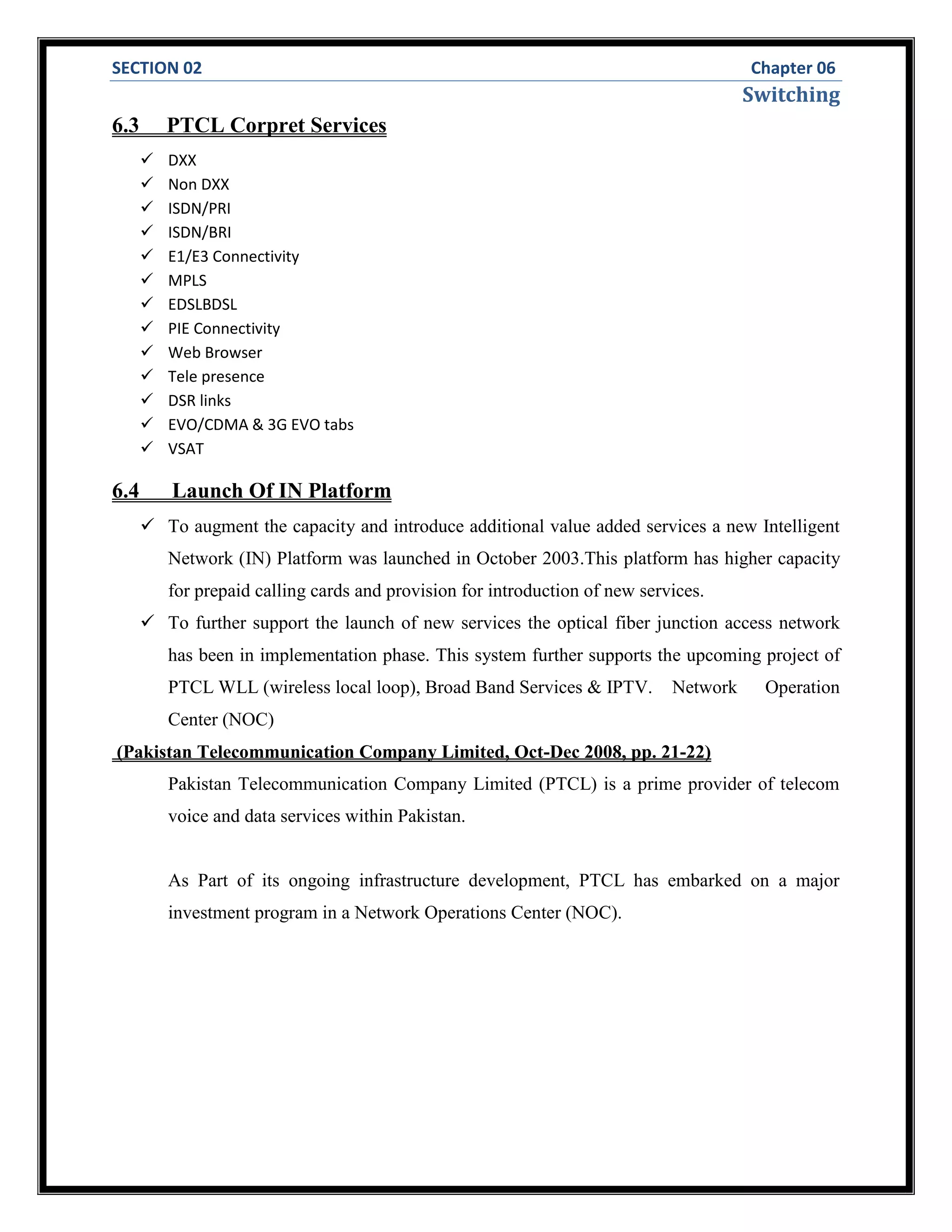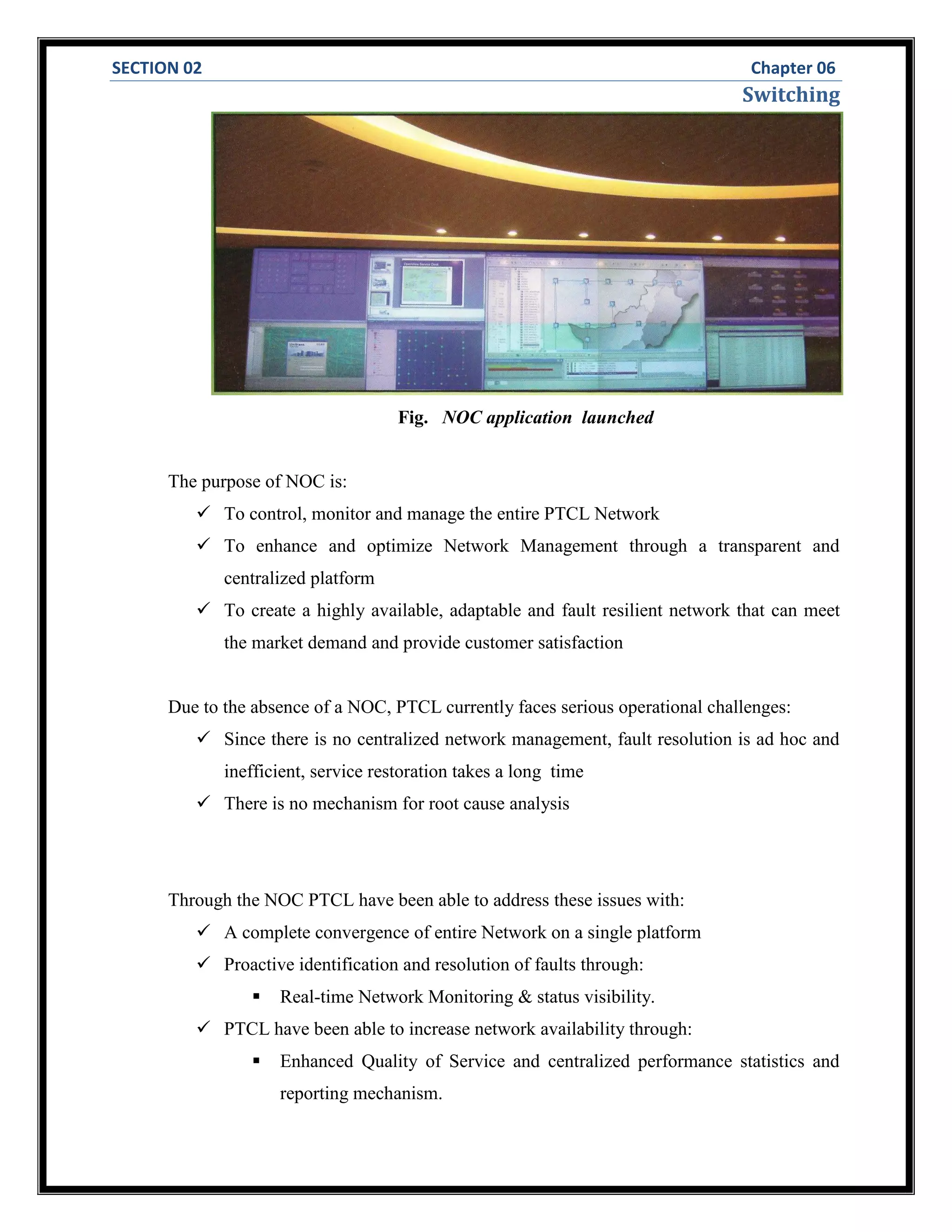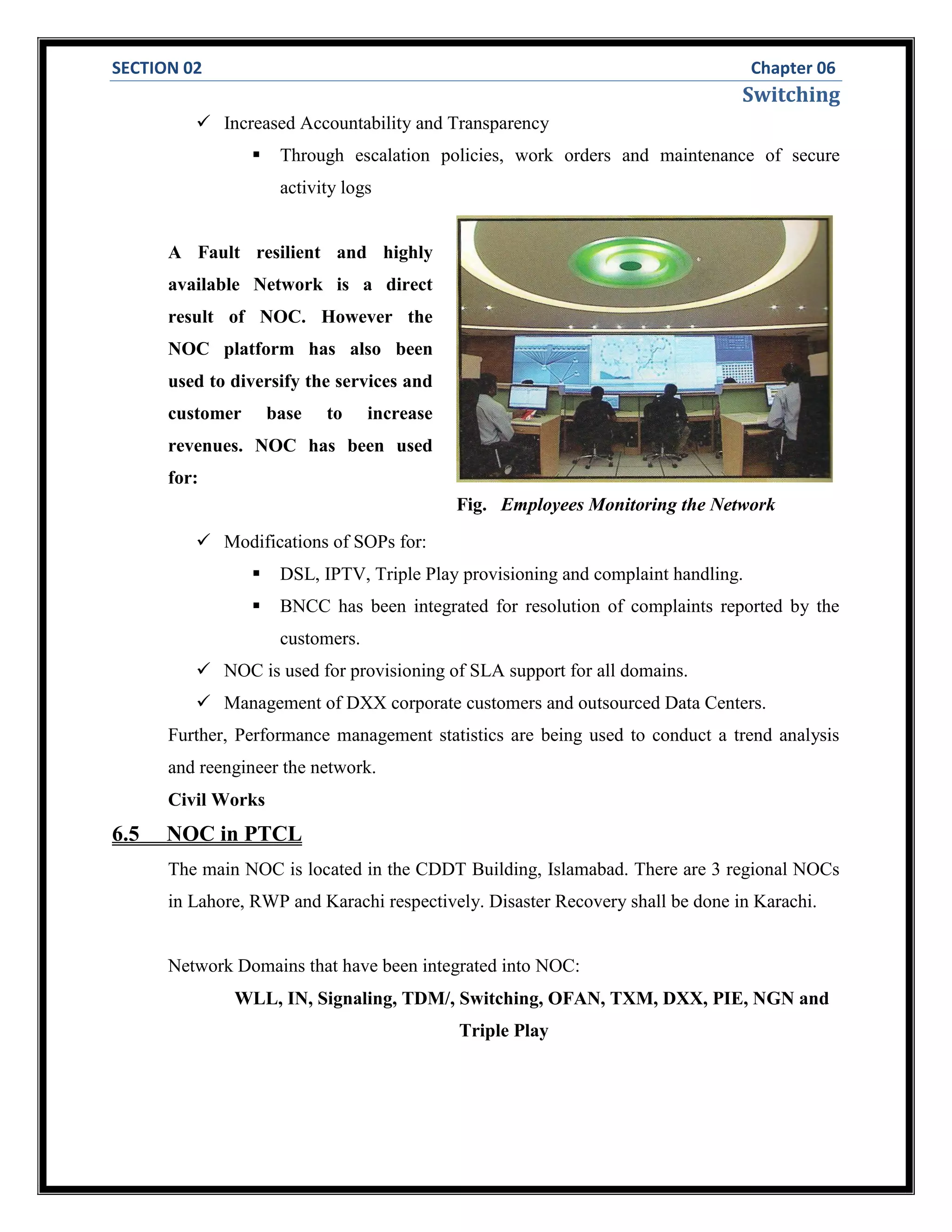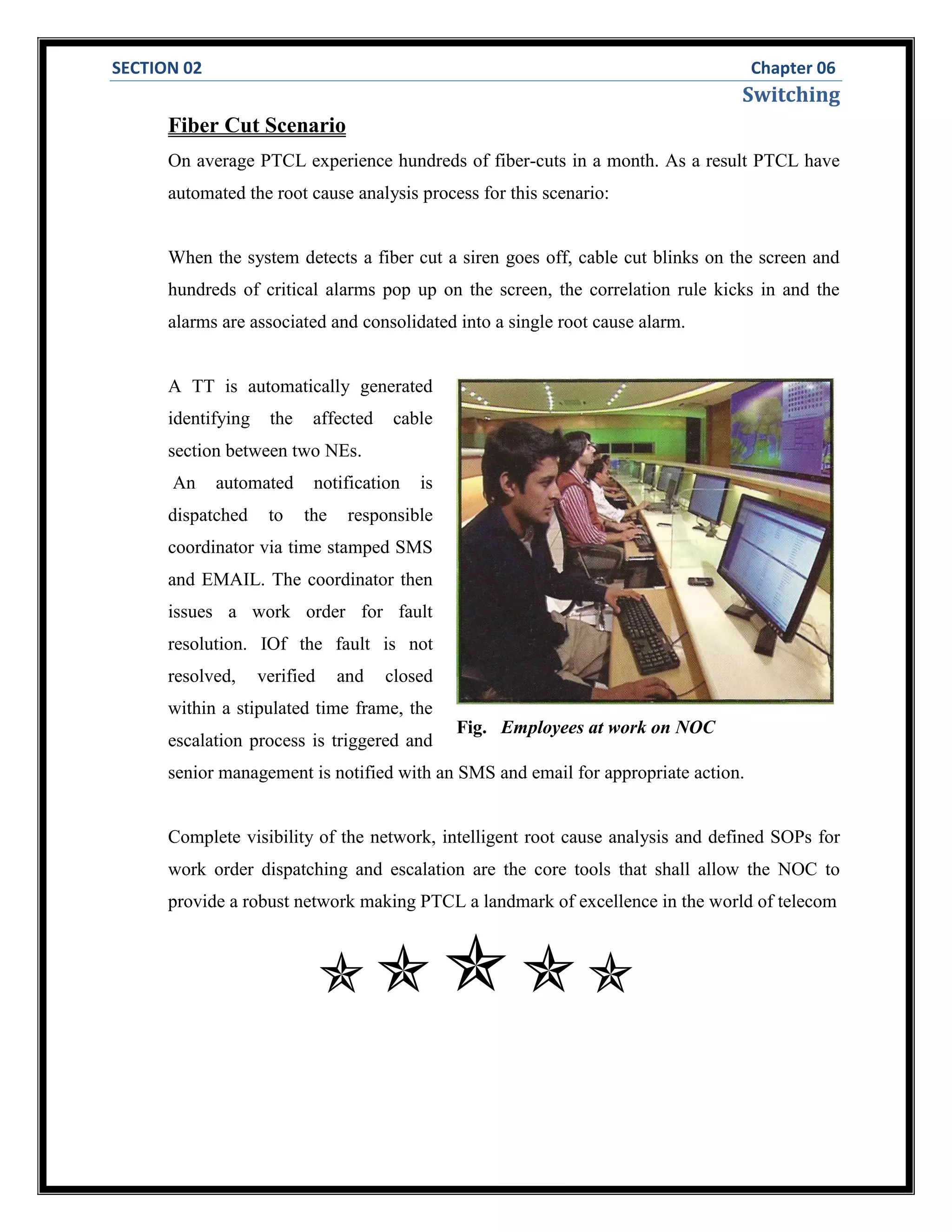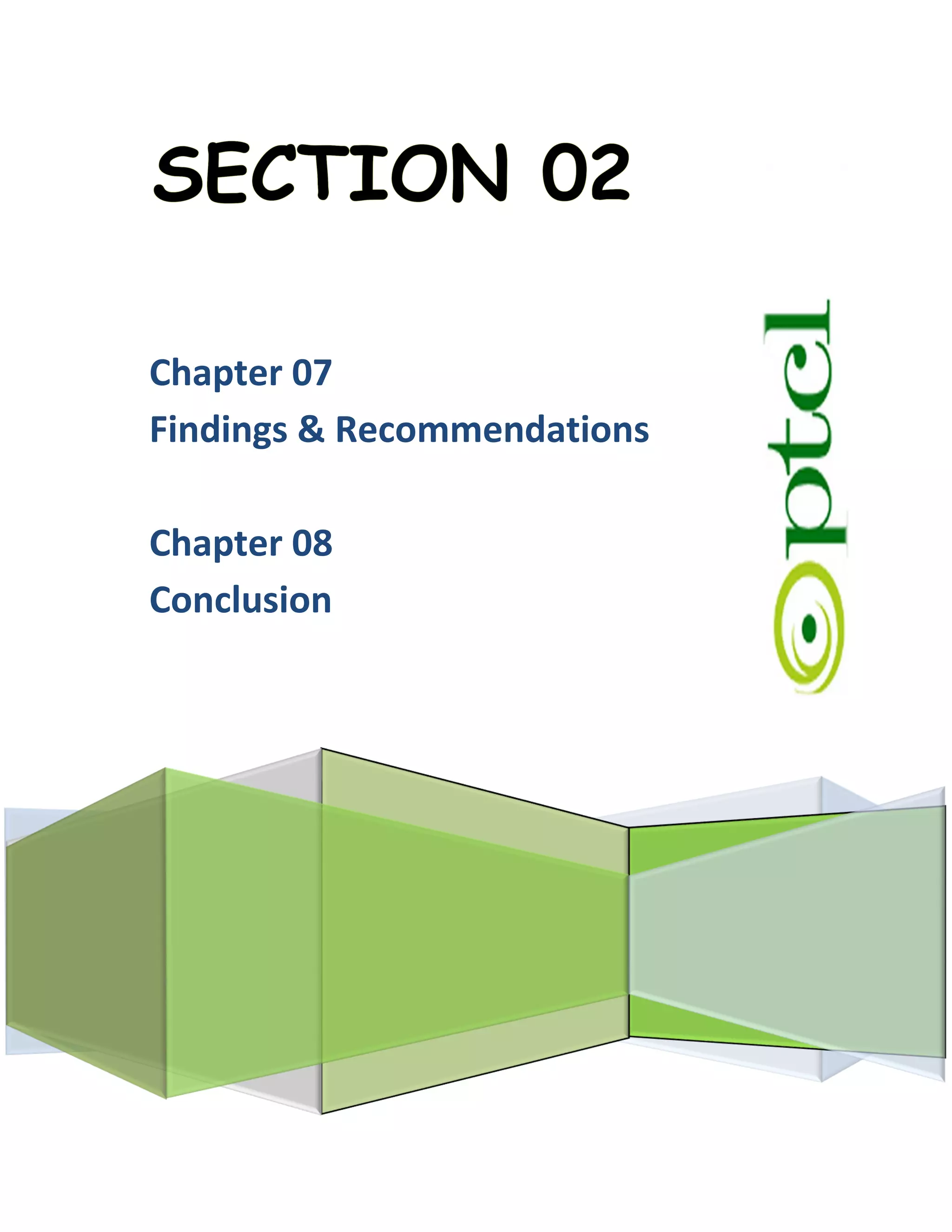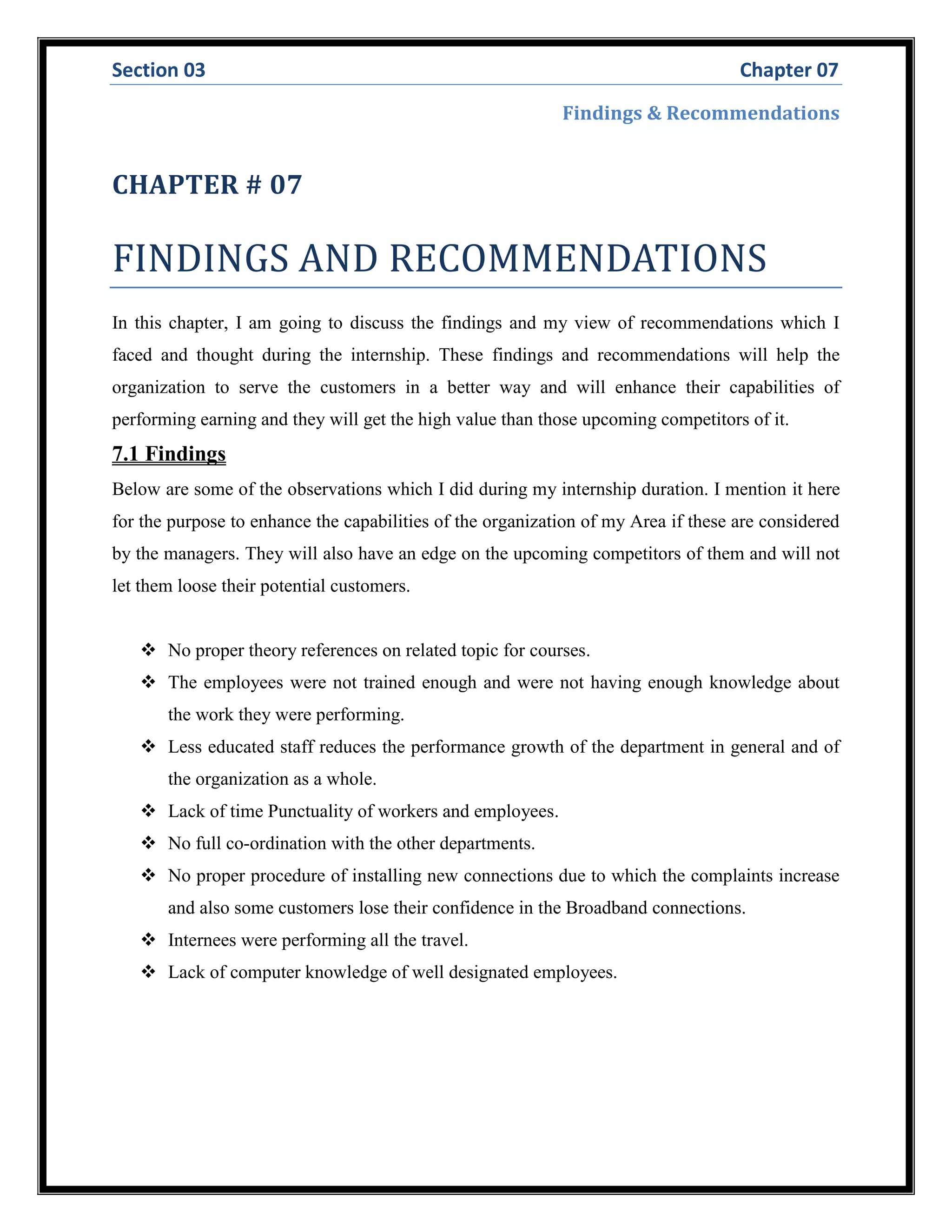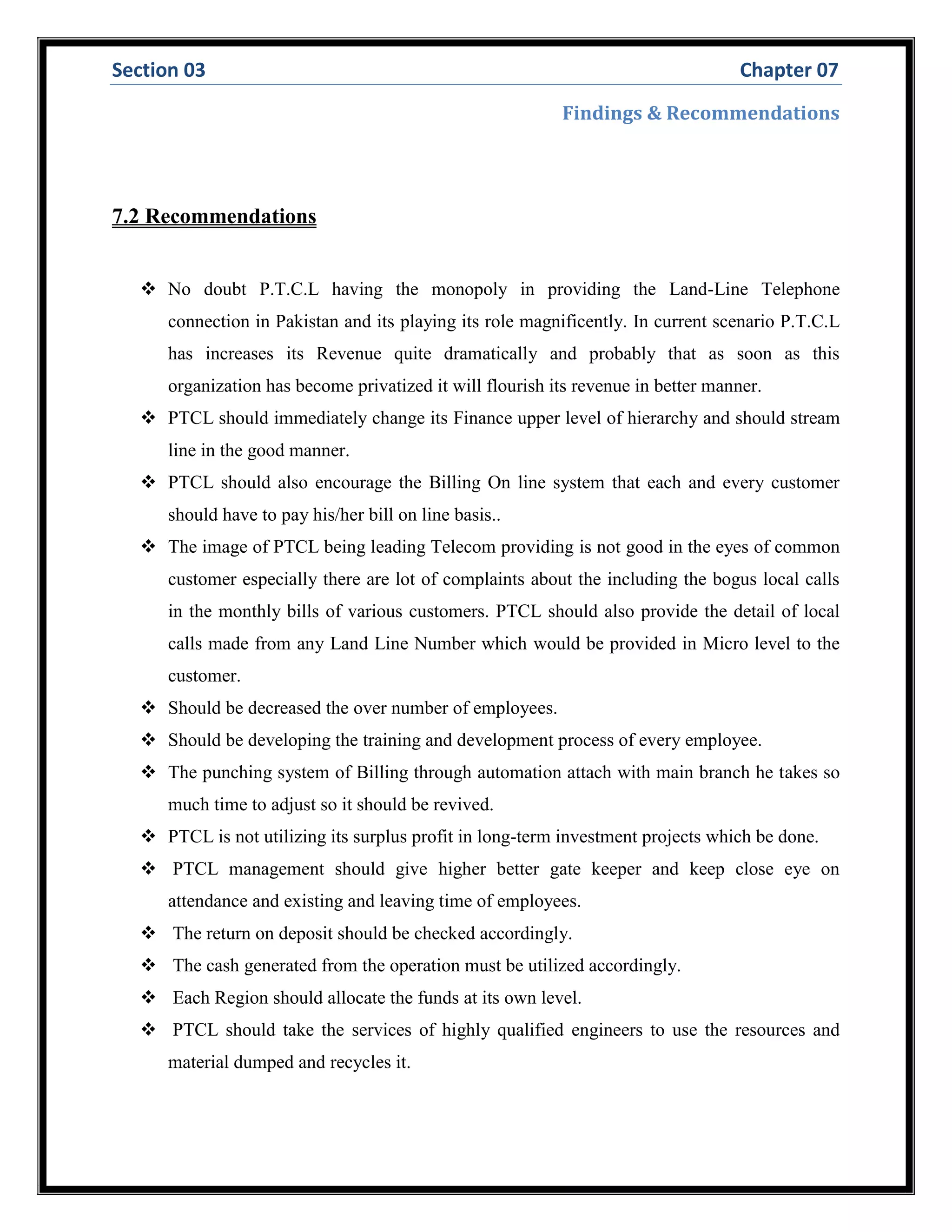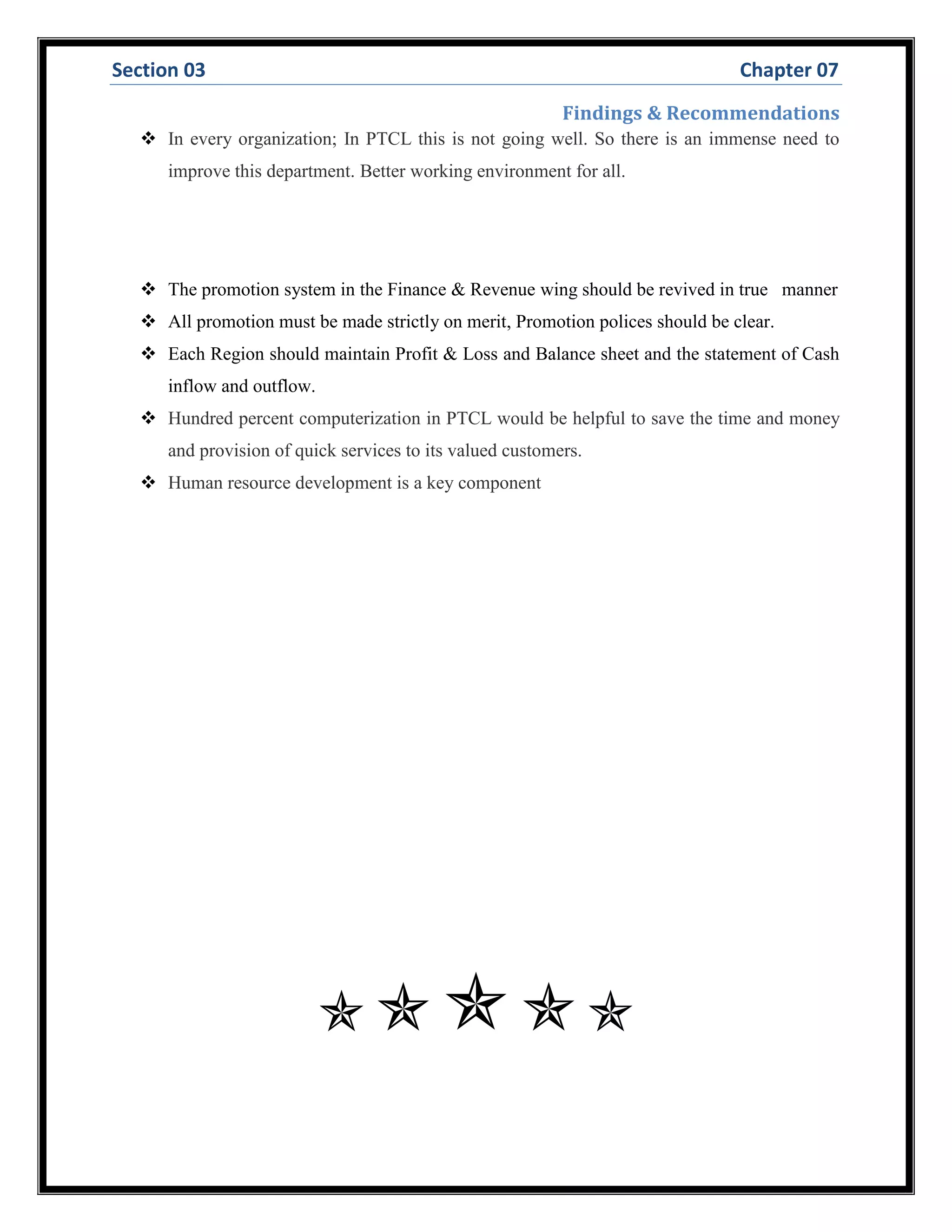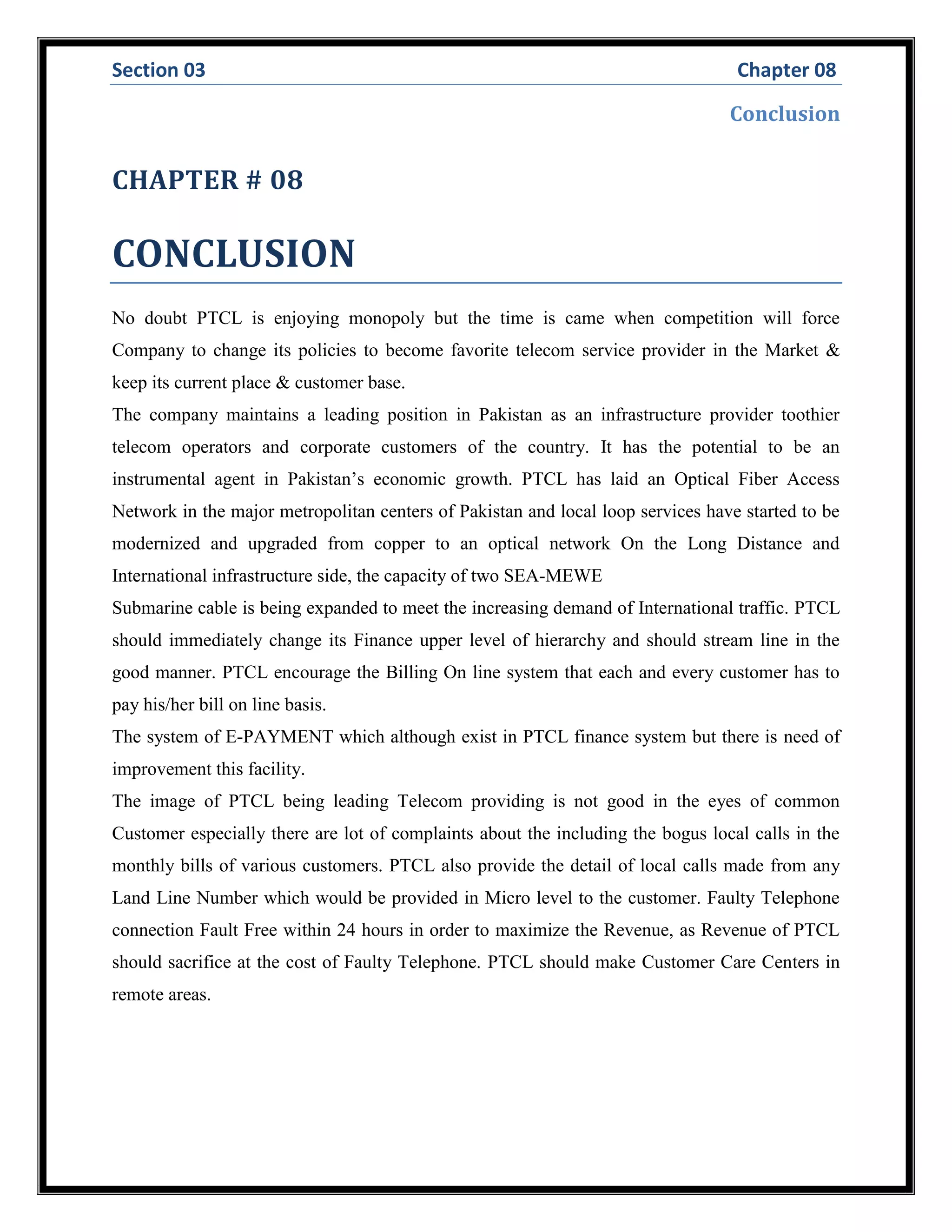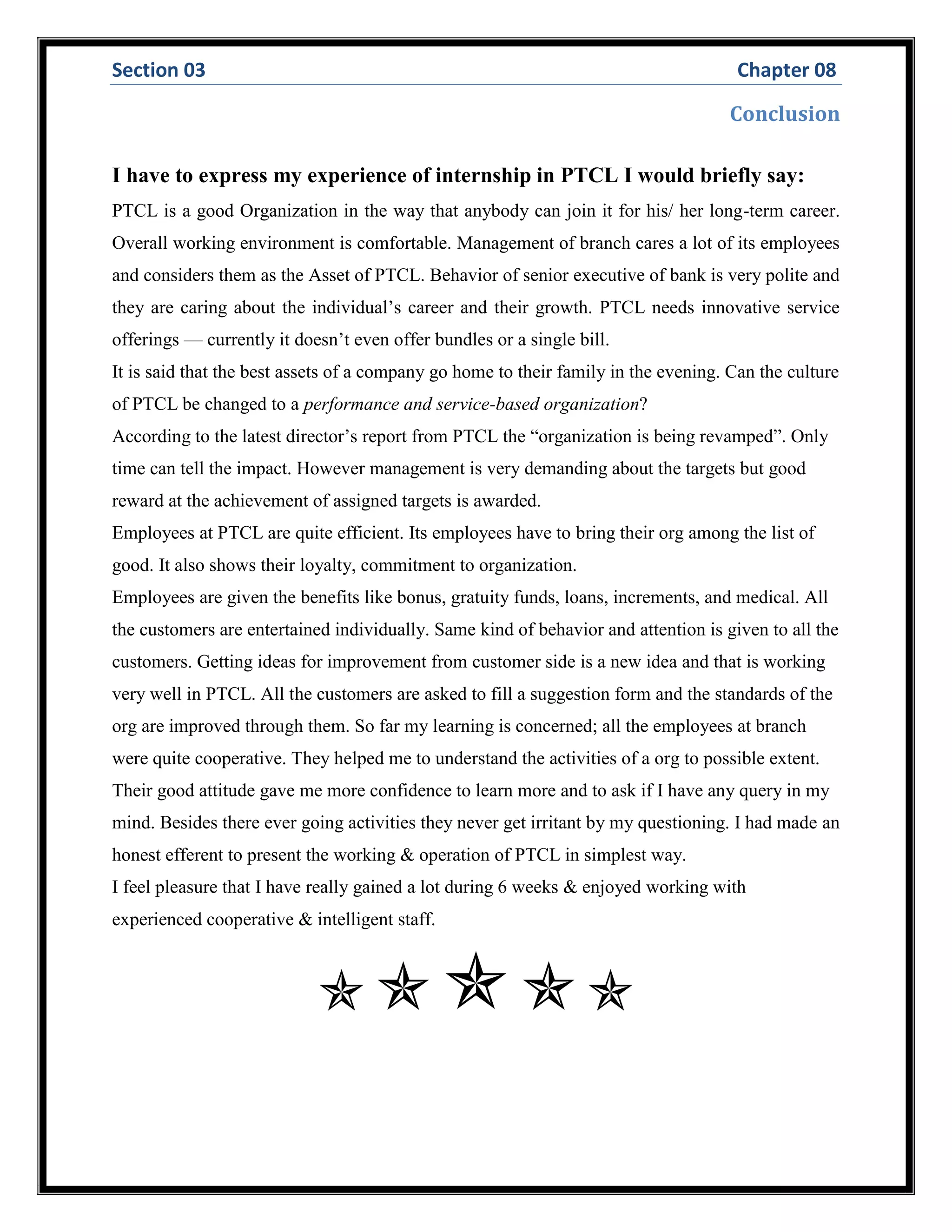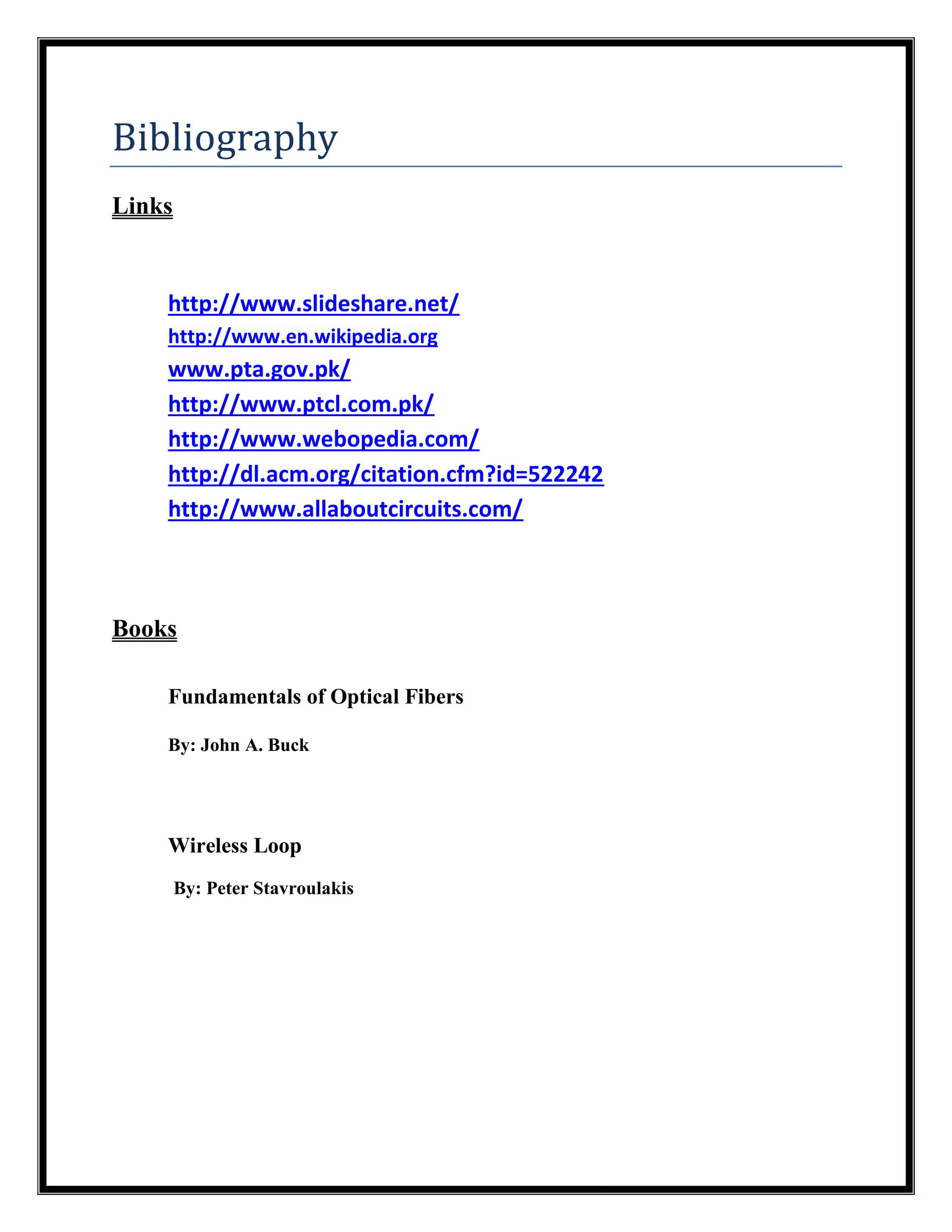The document provides an internship report on WLL, Switching and Transmission at Pakistan Telecommunication Company Limited (PTCL) in Karachi.
The three section report includes:
1. Introduction to the internship and PTCL organization
2. Details about the WLL, Switching and Transmission department where the internship was conducted, including services provided and duties performed.
3. Findings and recommendations from the internship, along with a conclusion.
The report provides an overview of the internship experience at PTCL's WLL, Switching and Transmission department, with the goal of fulfilling degree requirements.
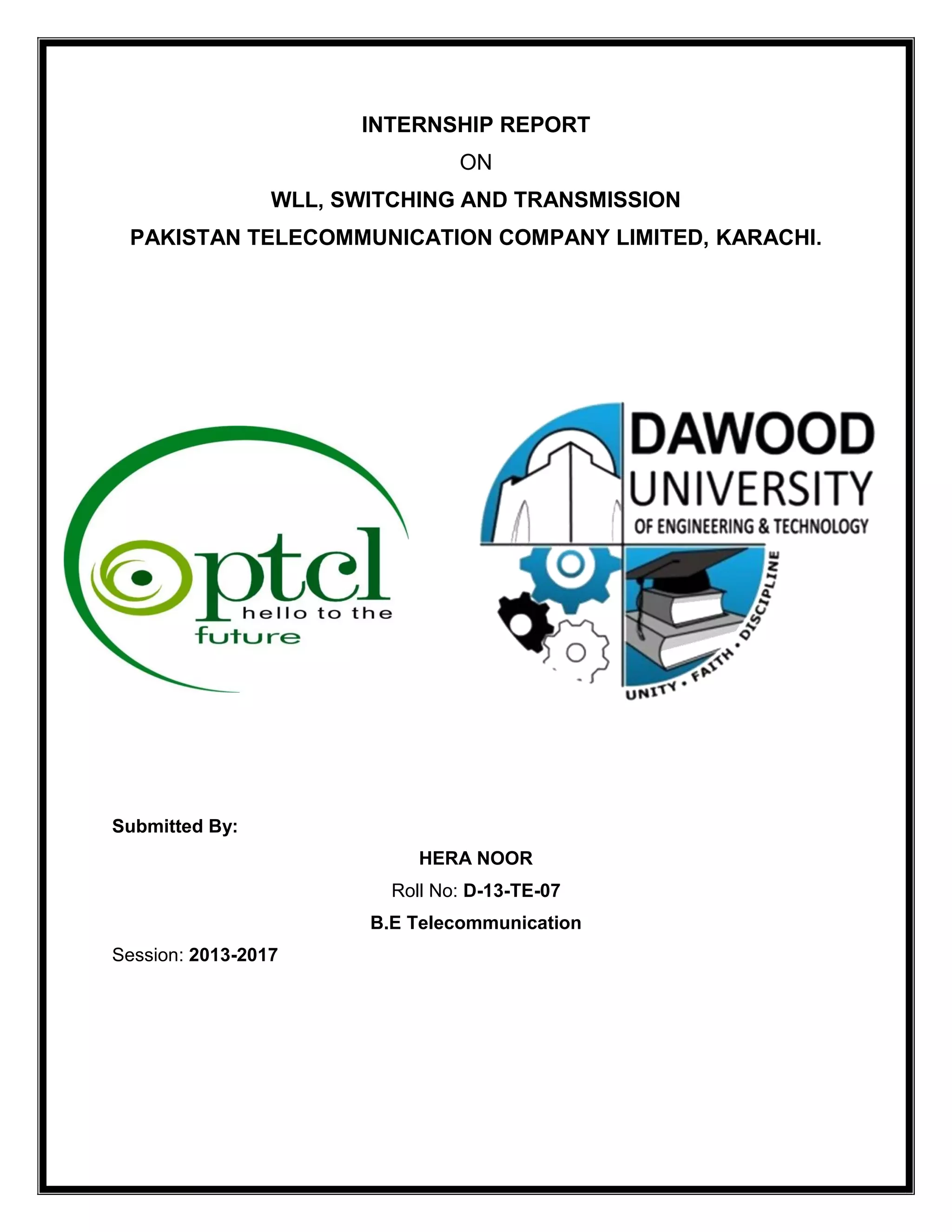

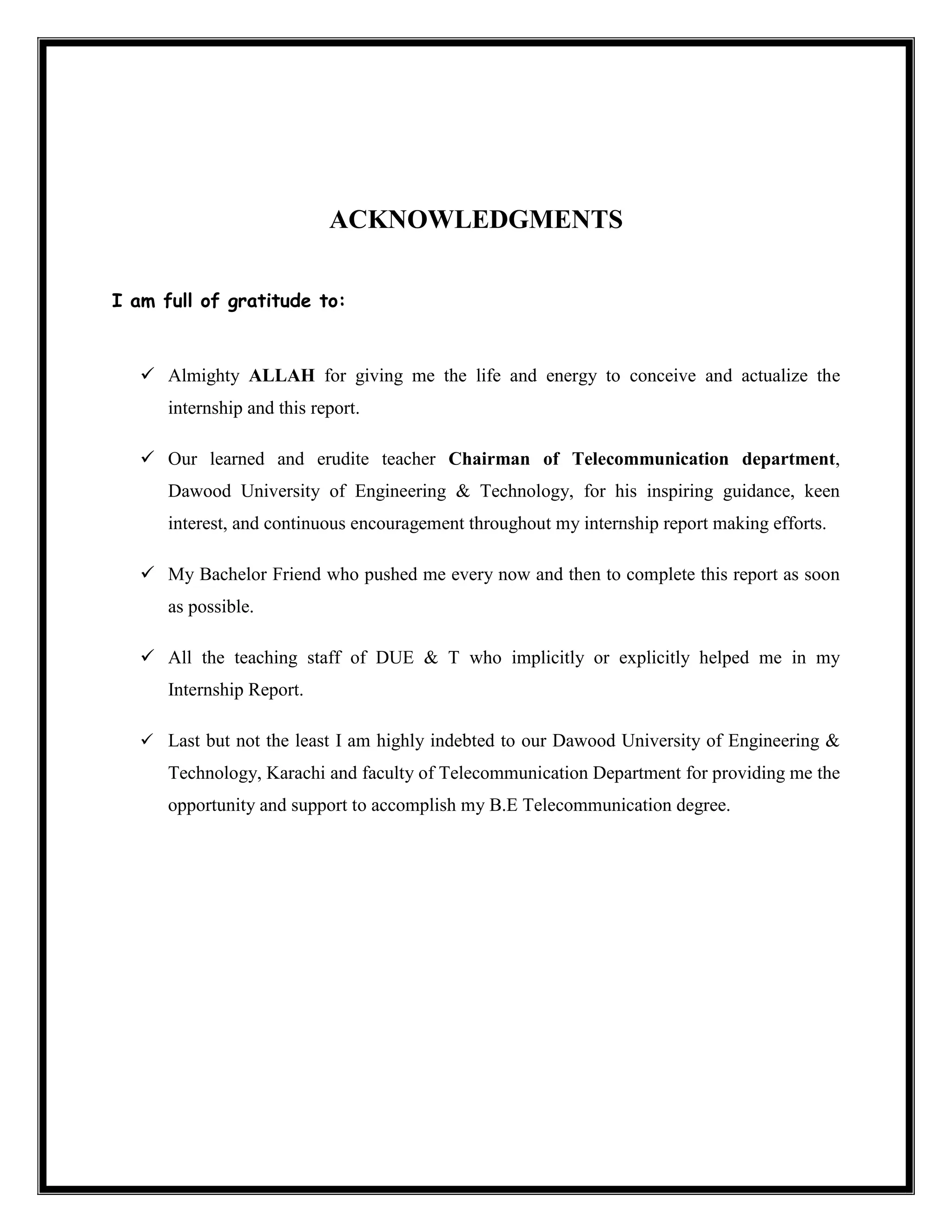

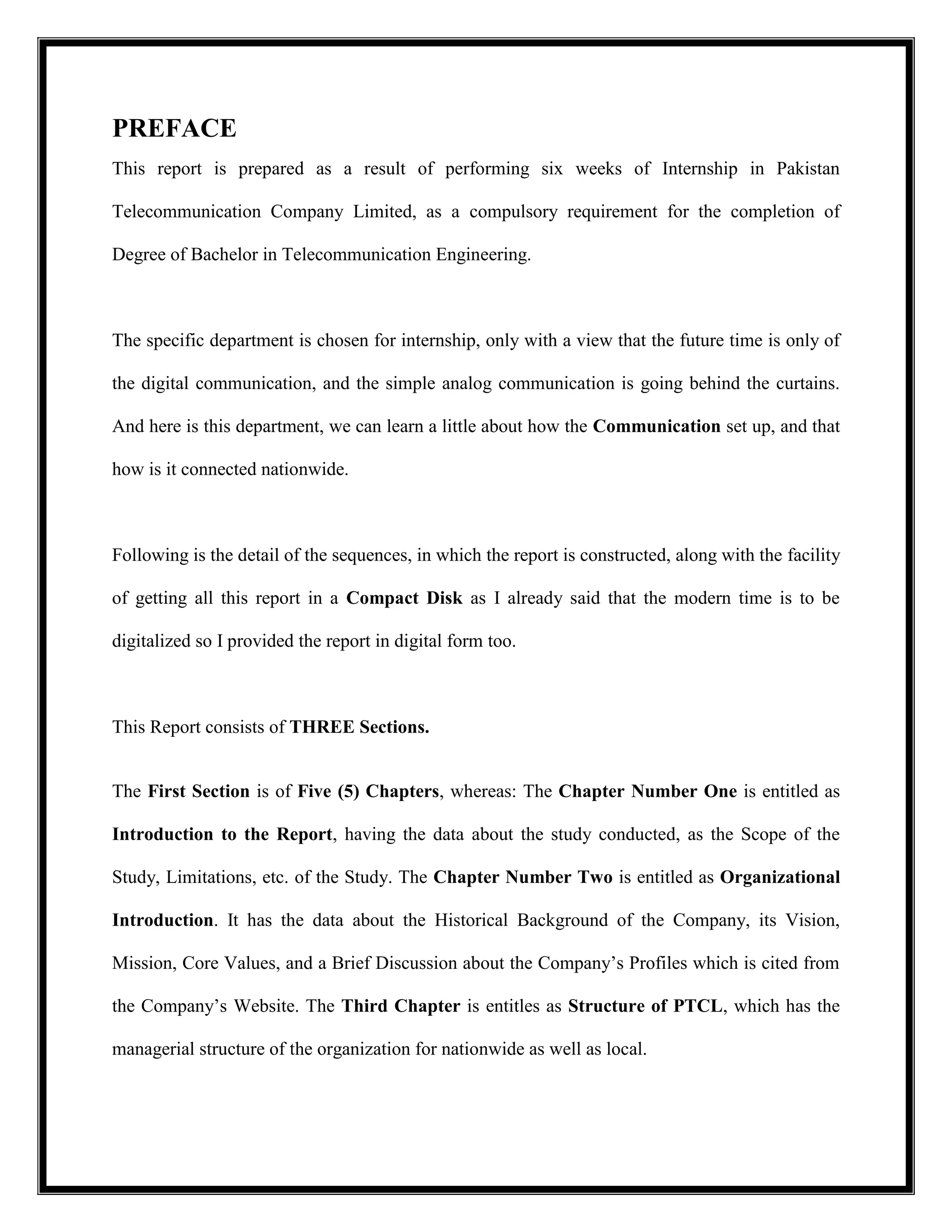

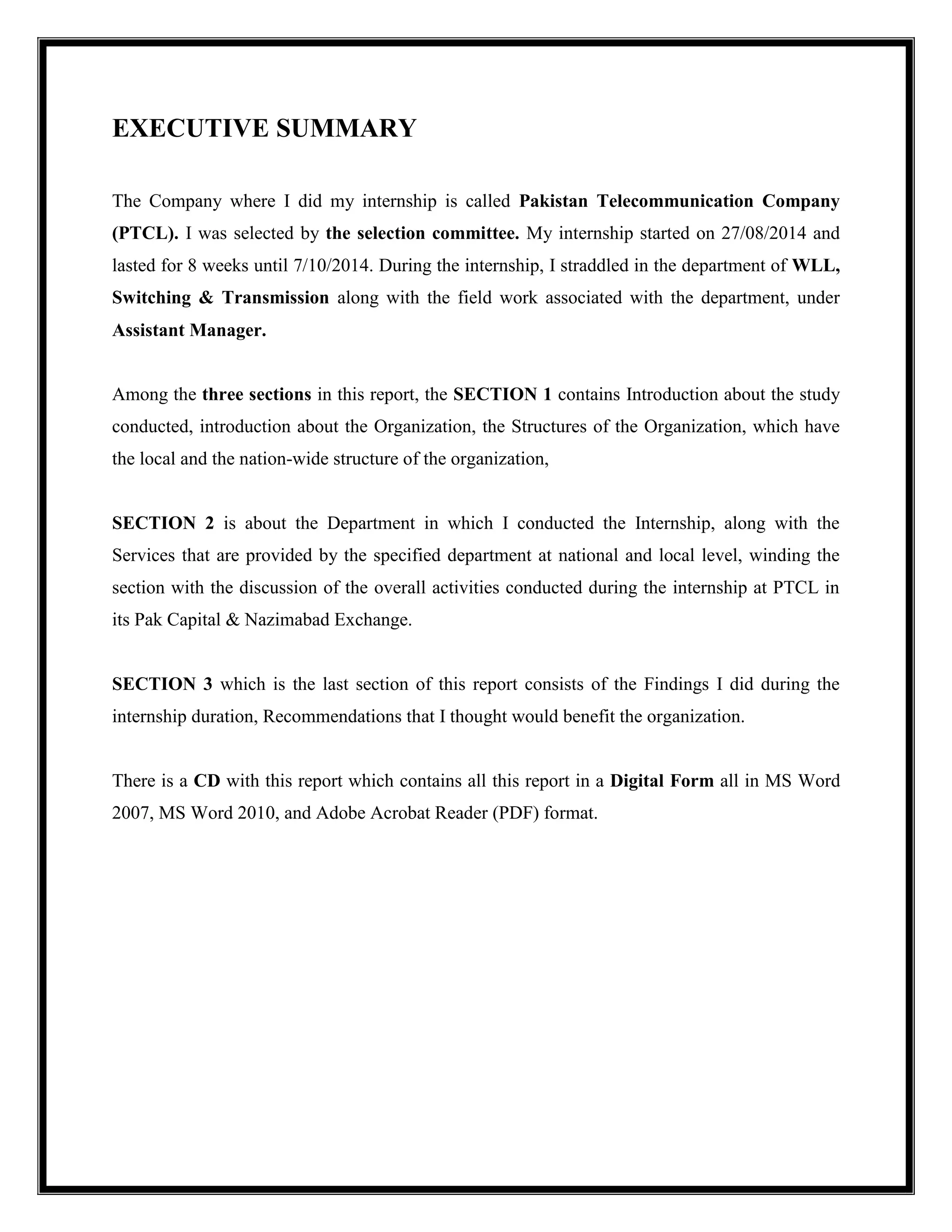
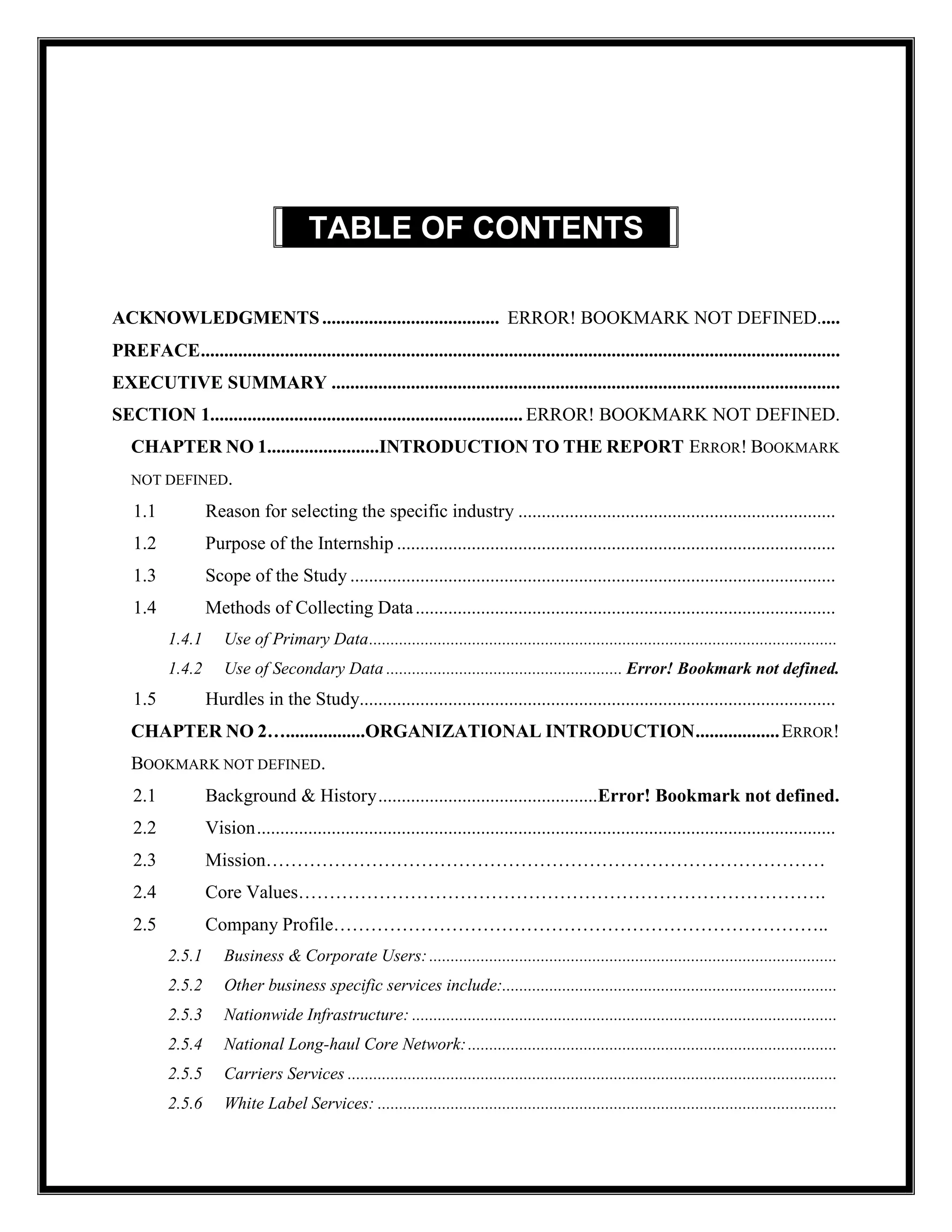
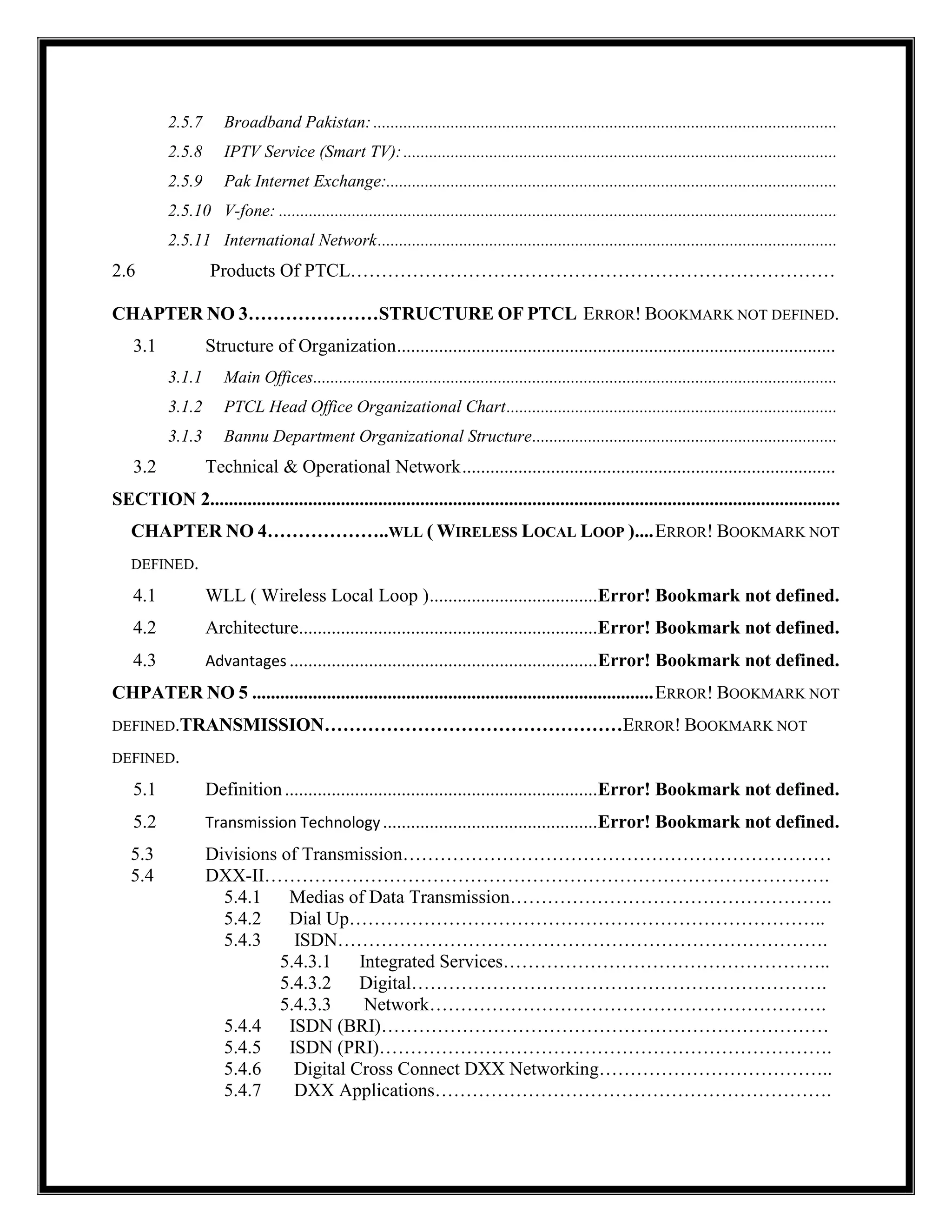
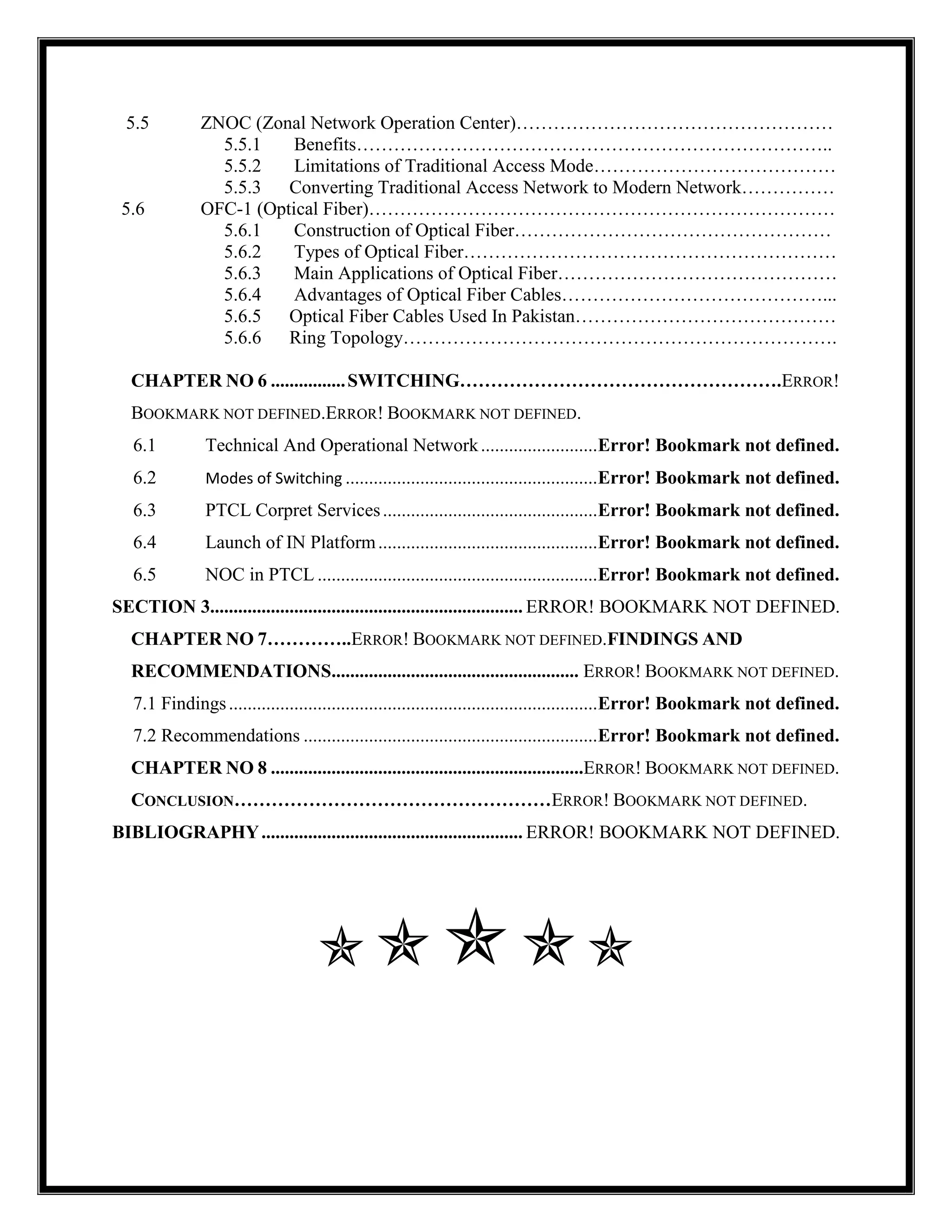
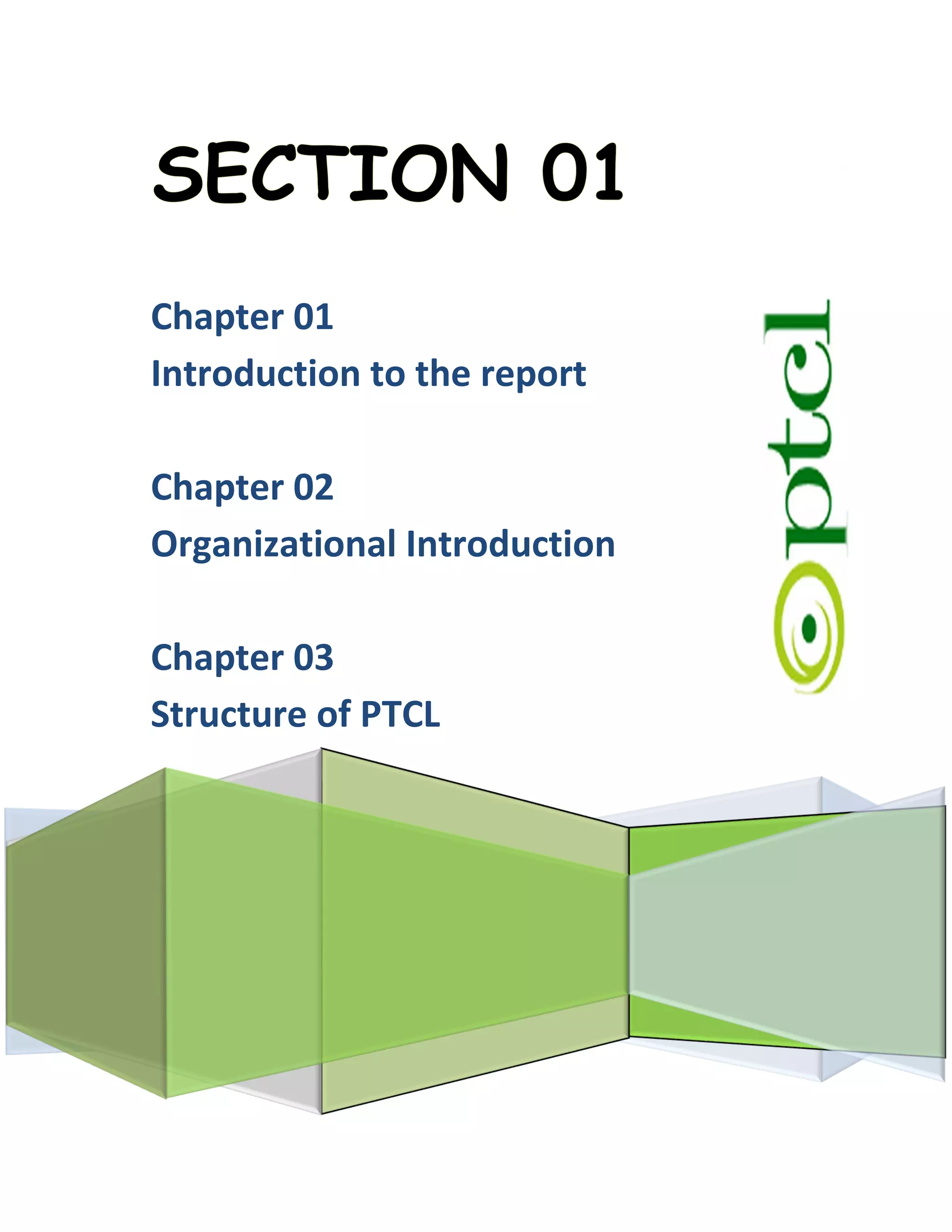
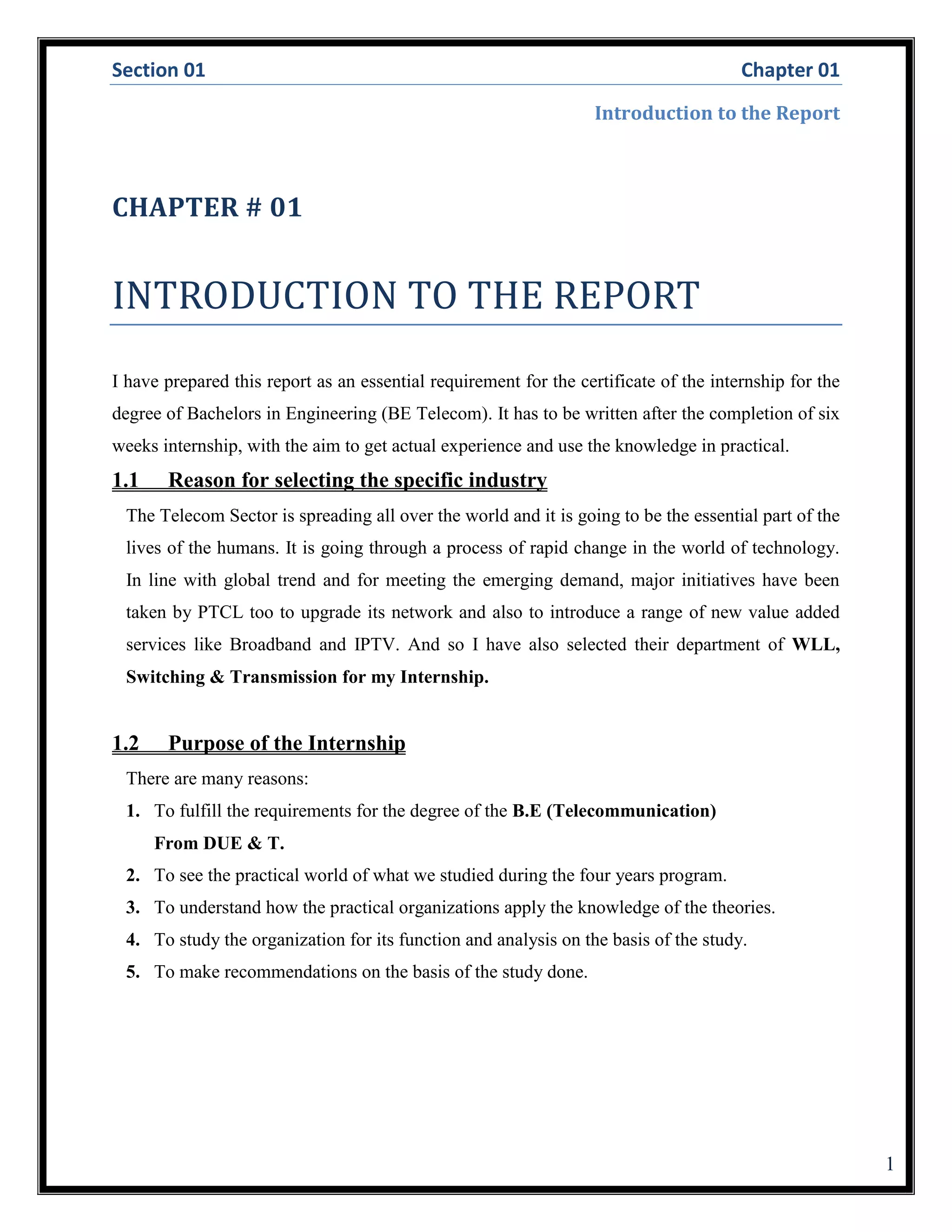
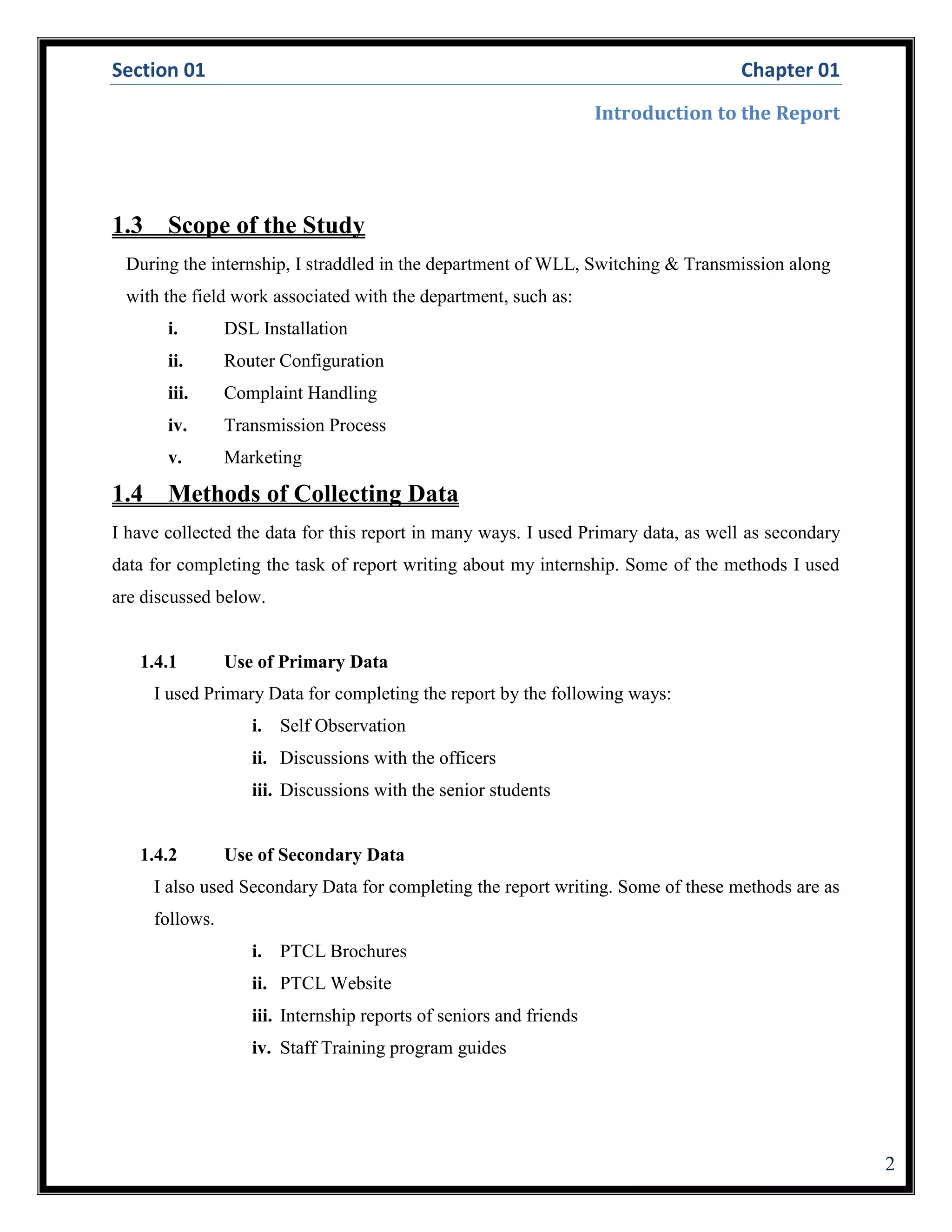

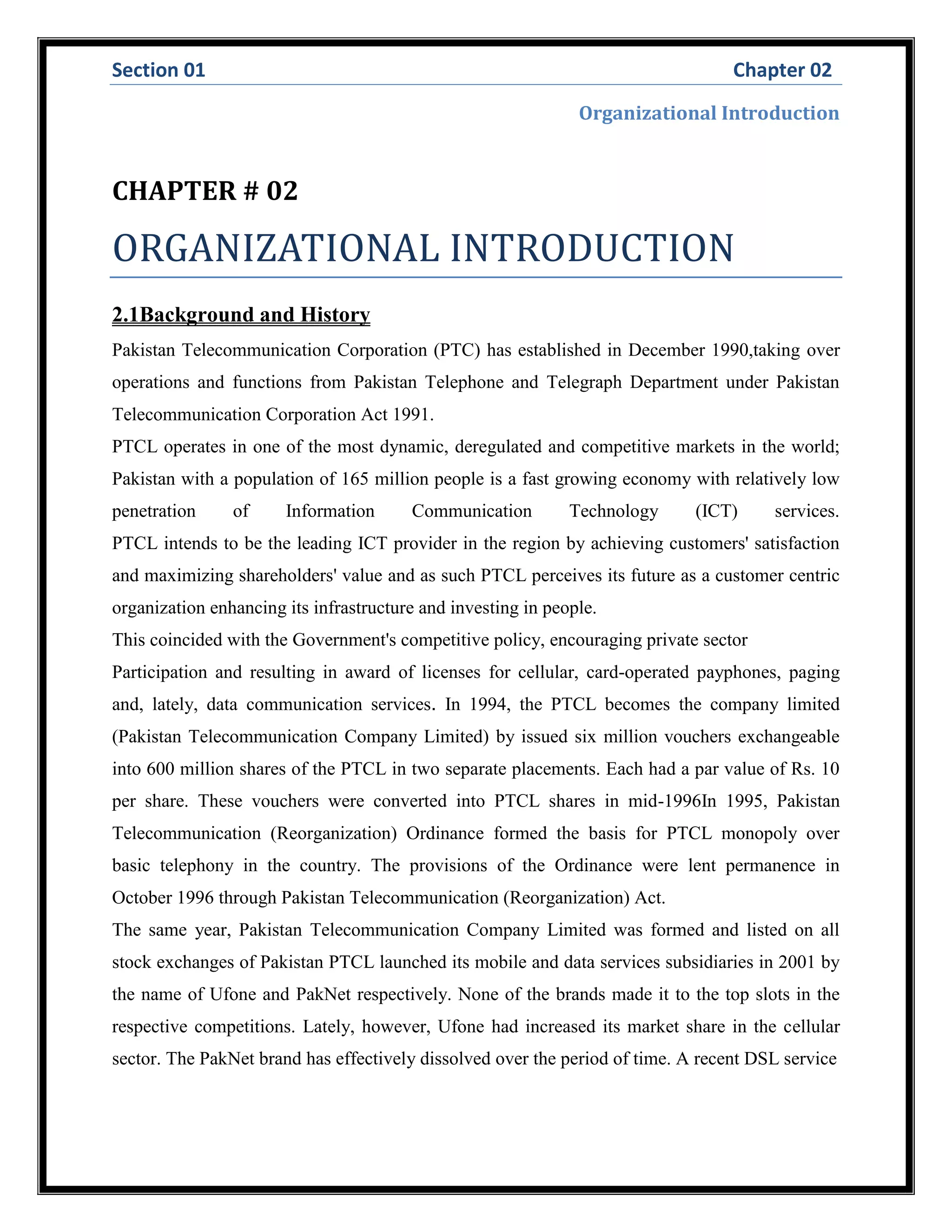
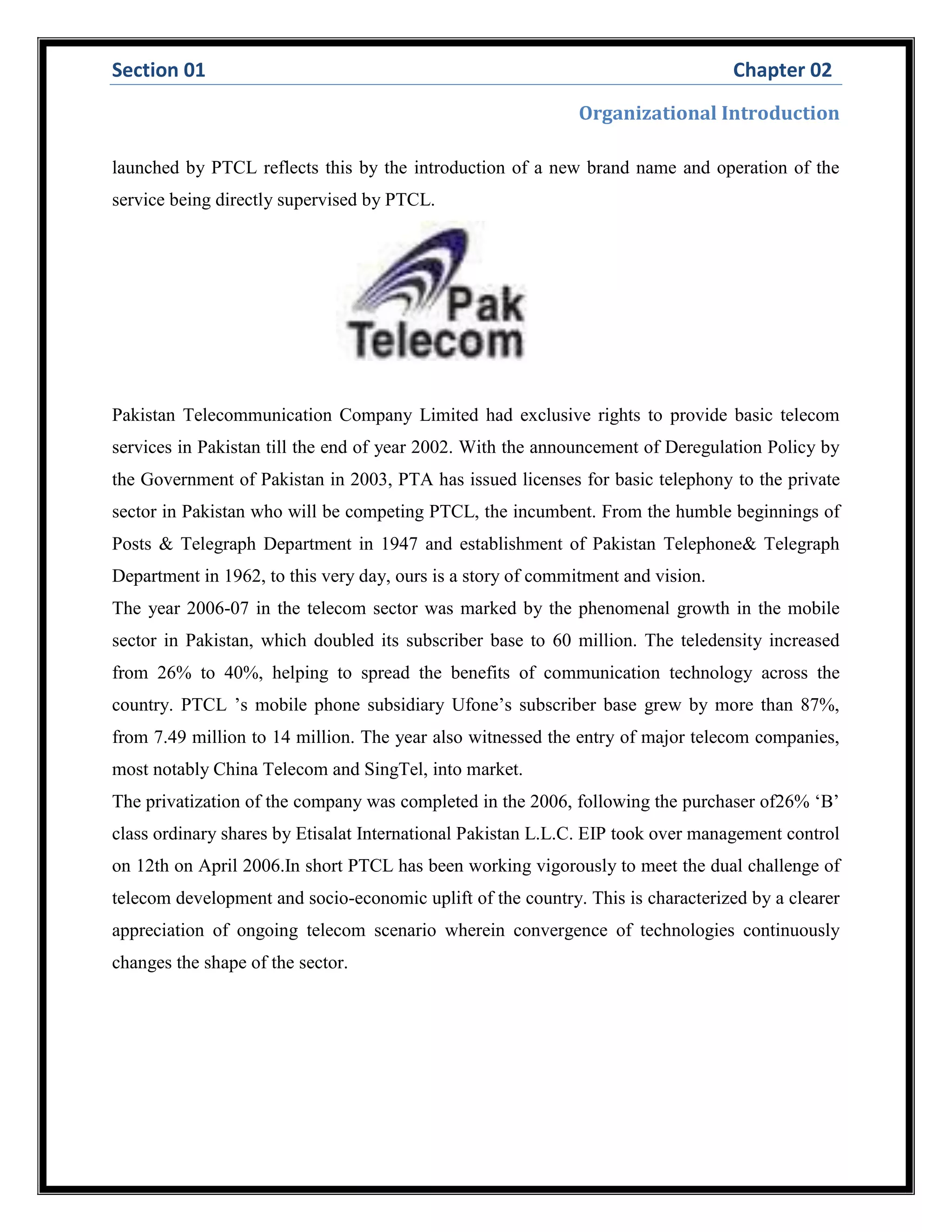
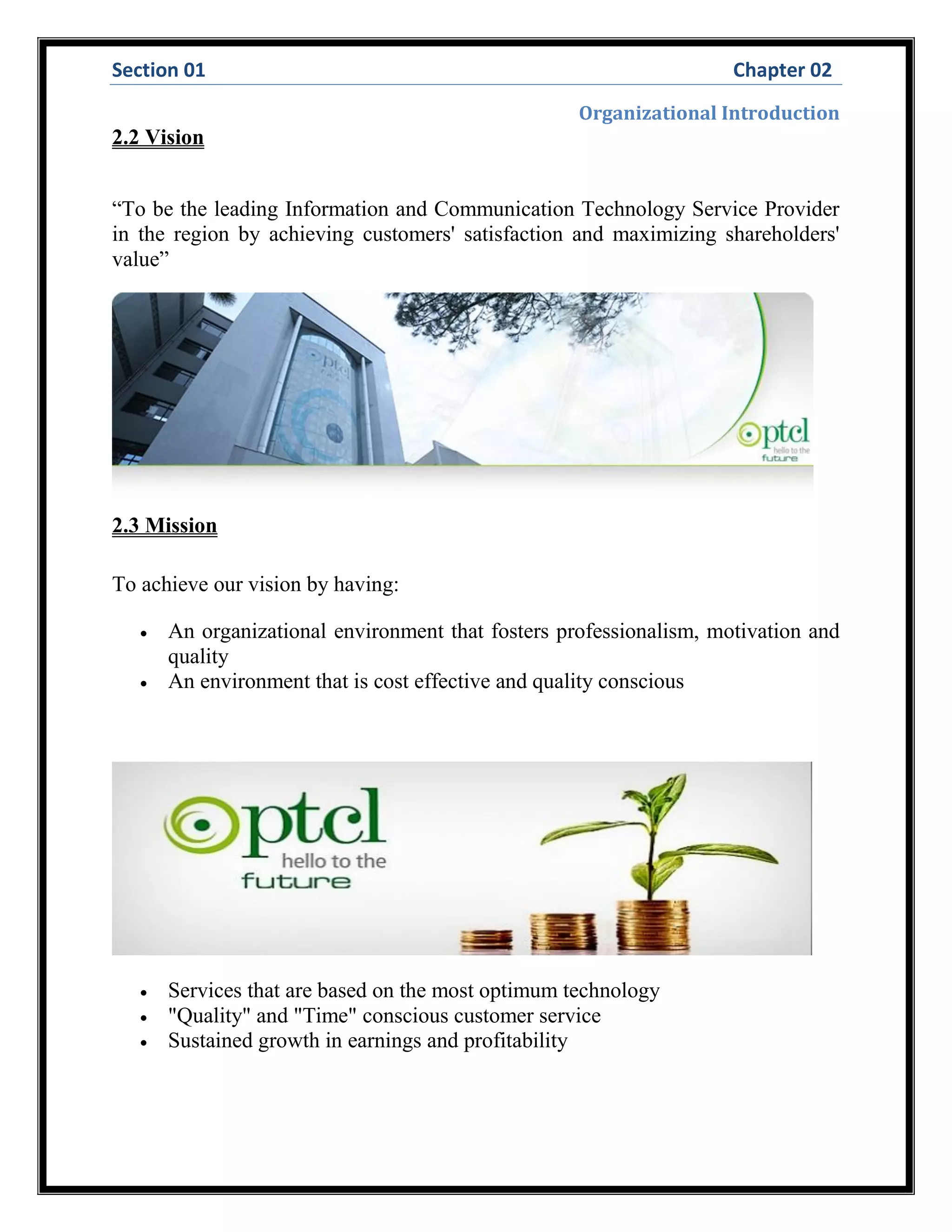
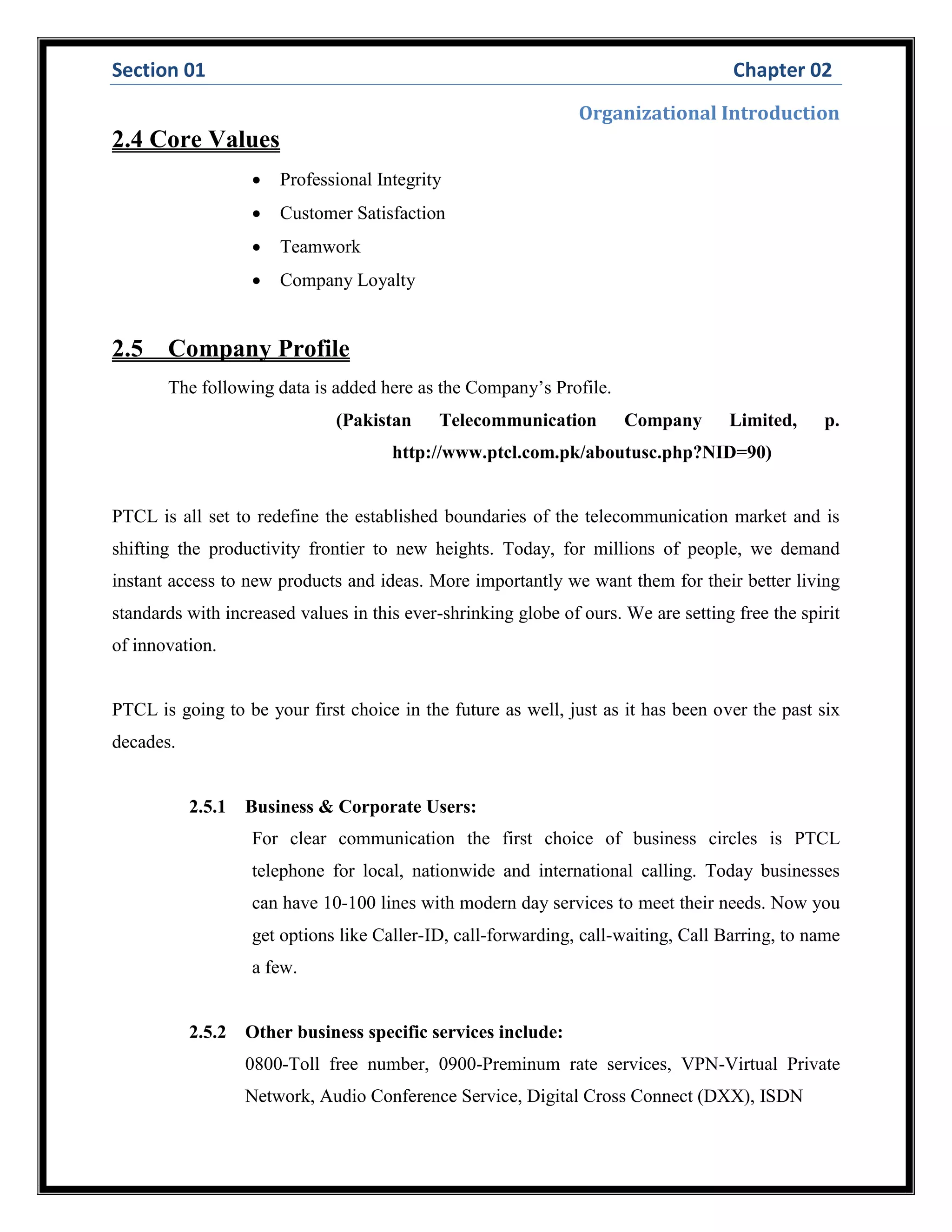
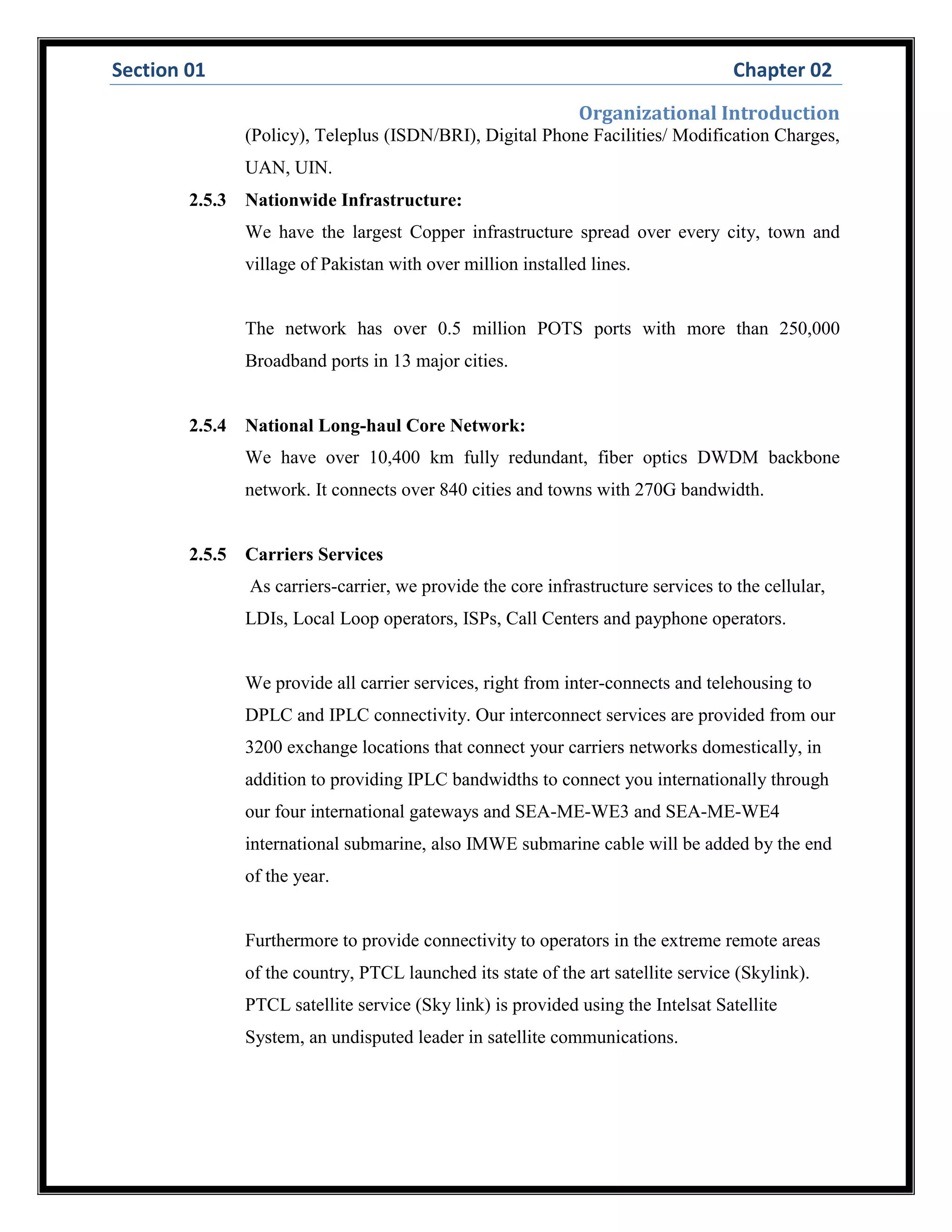
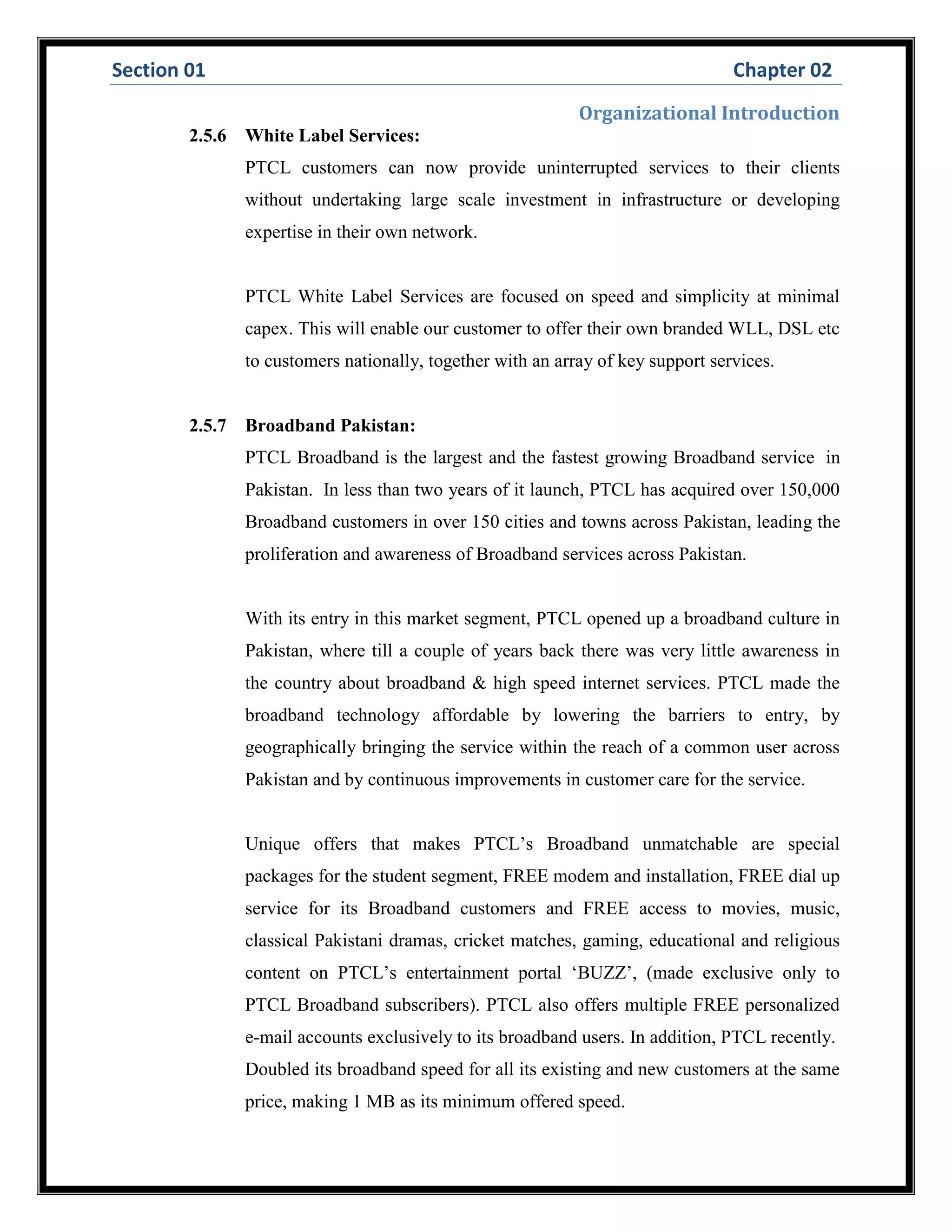
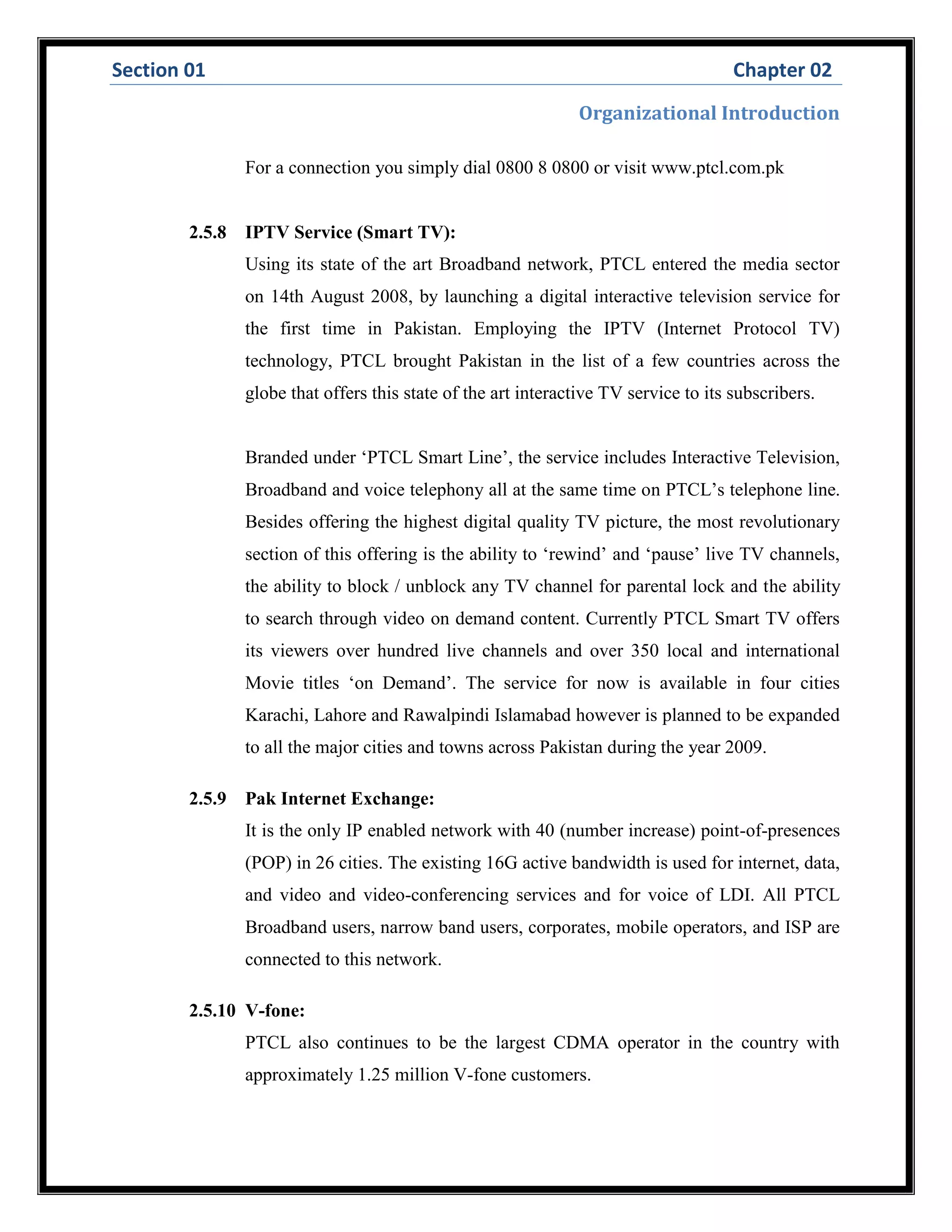
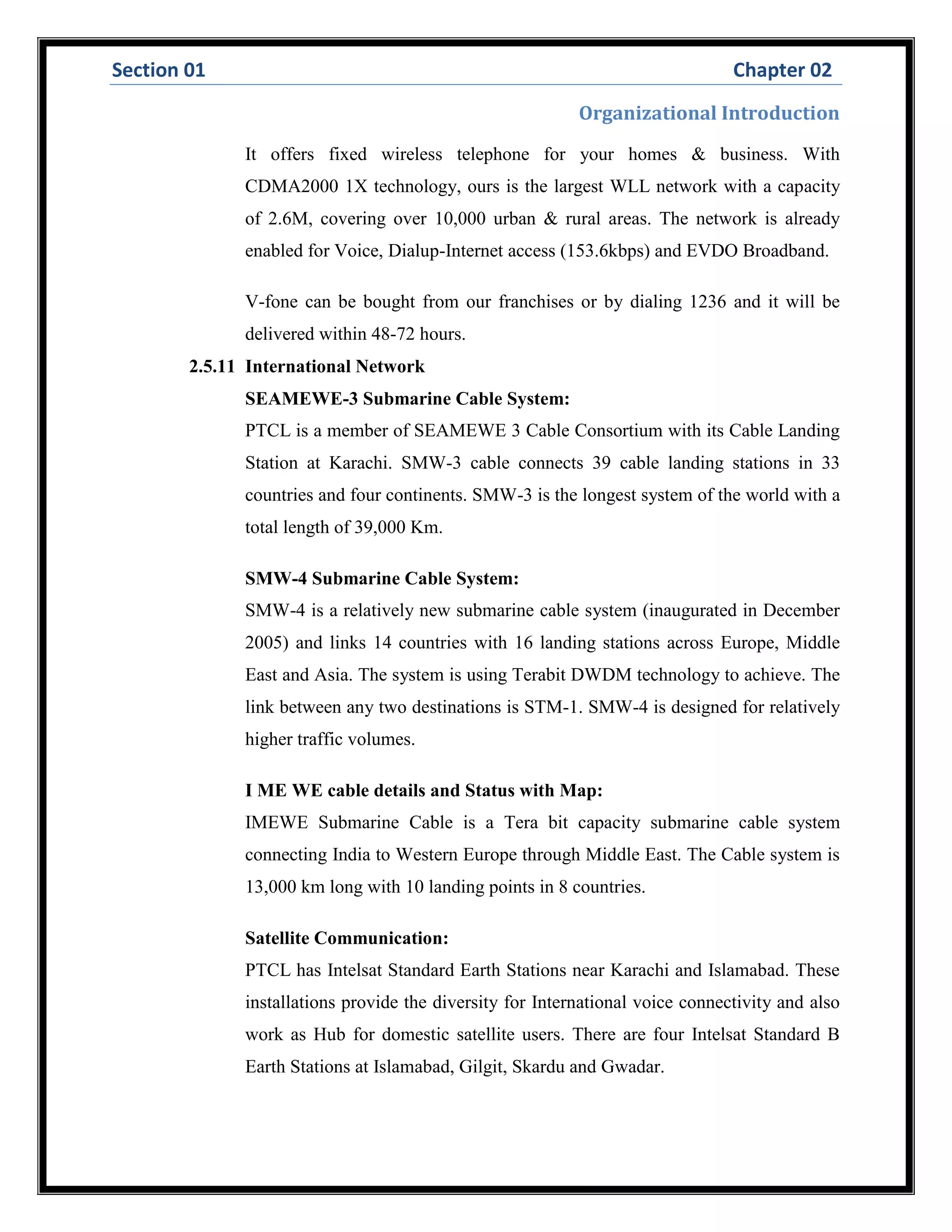
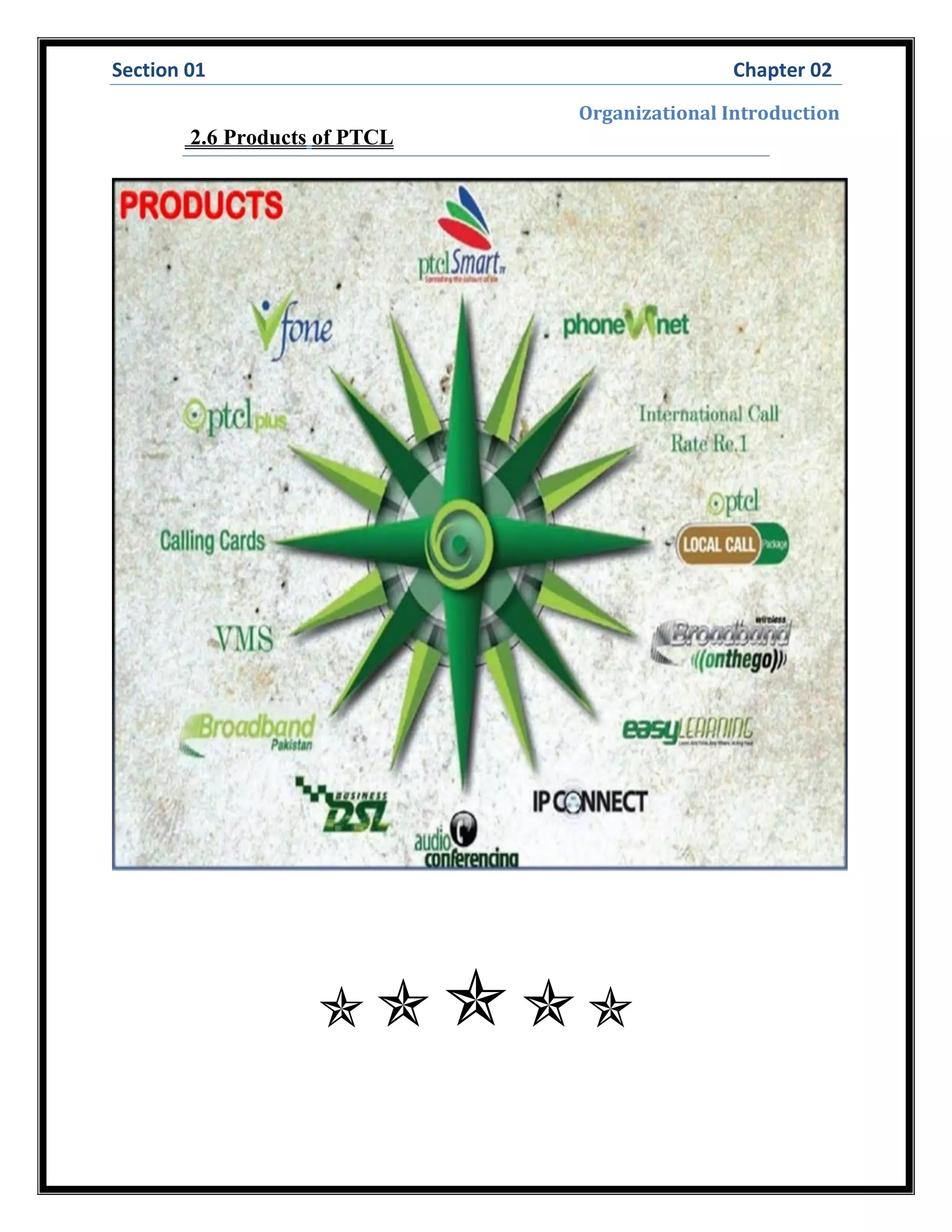



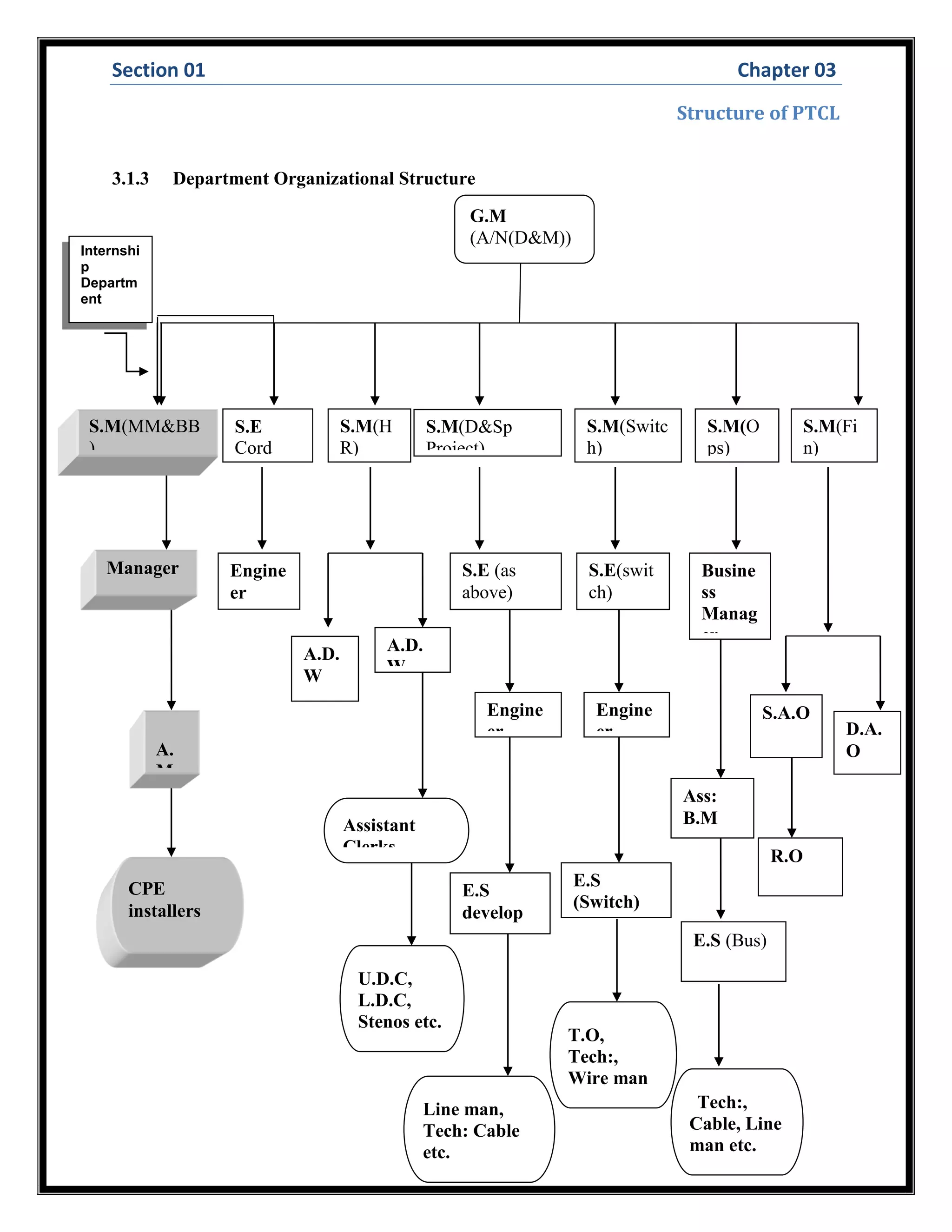
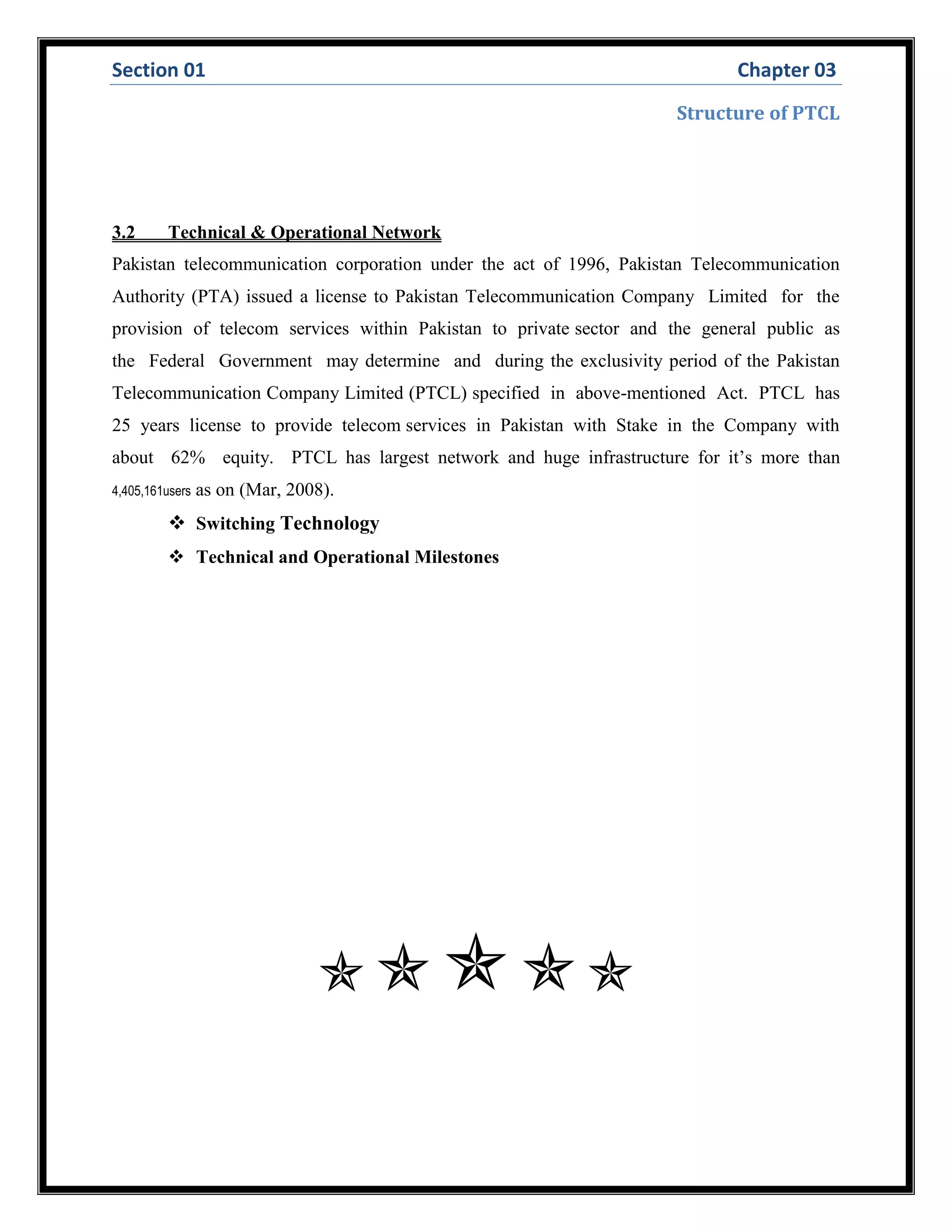
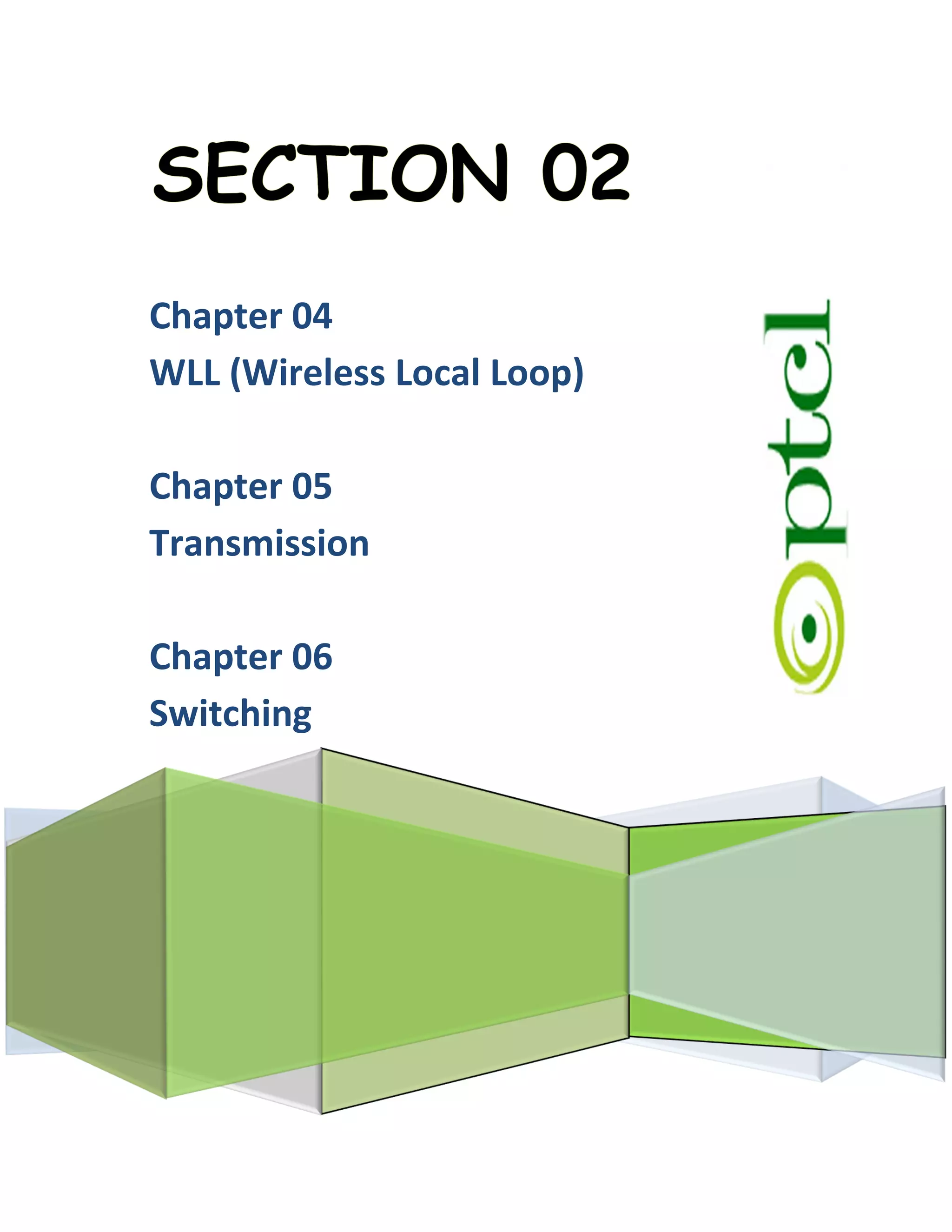

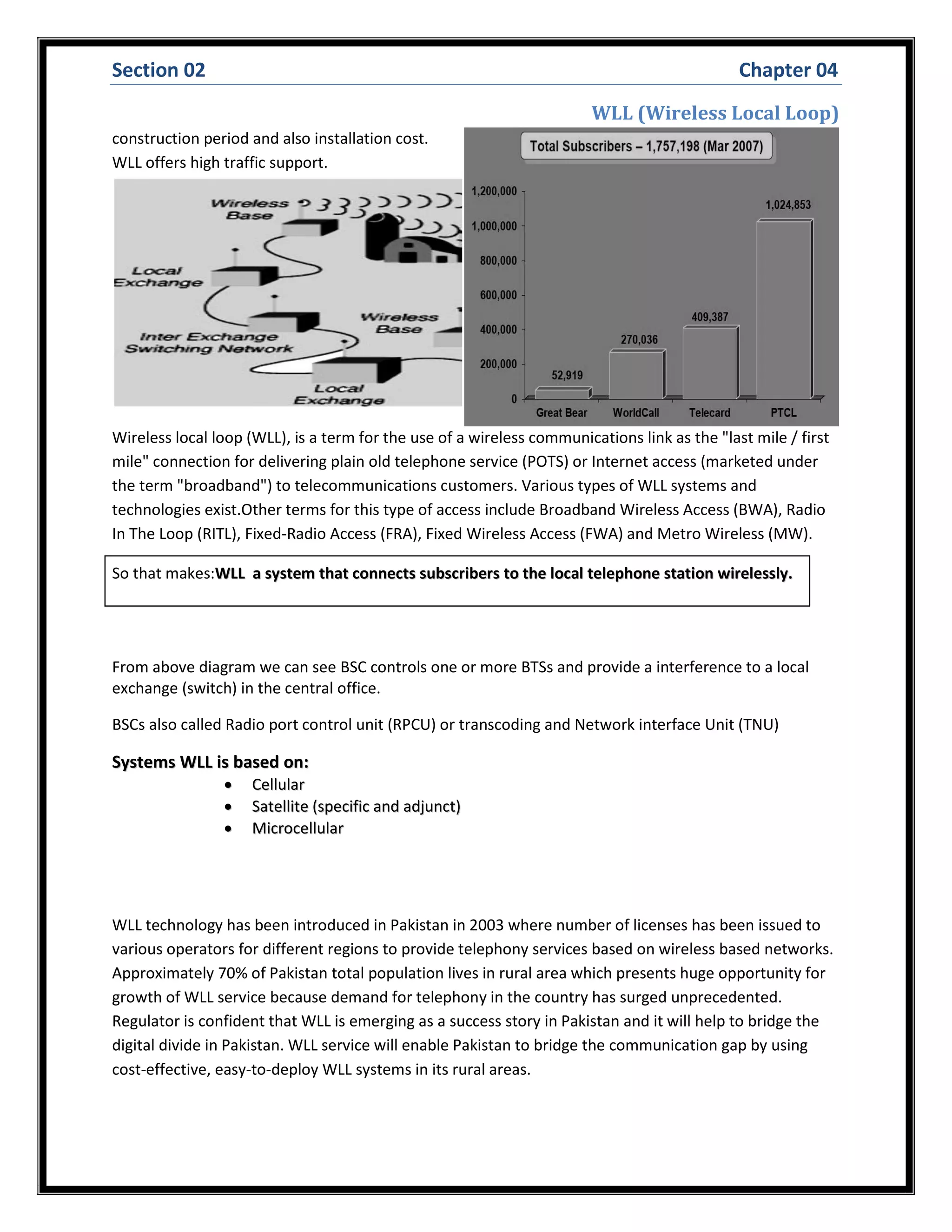
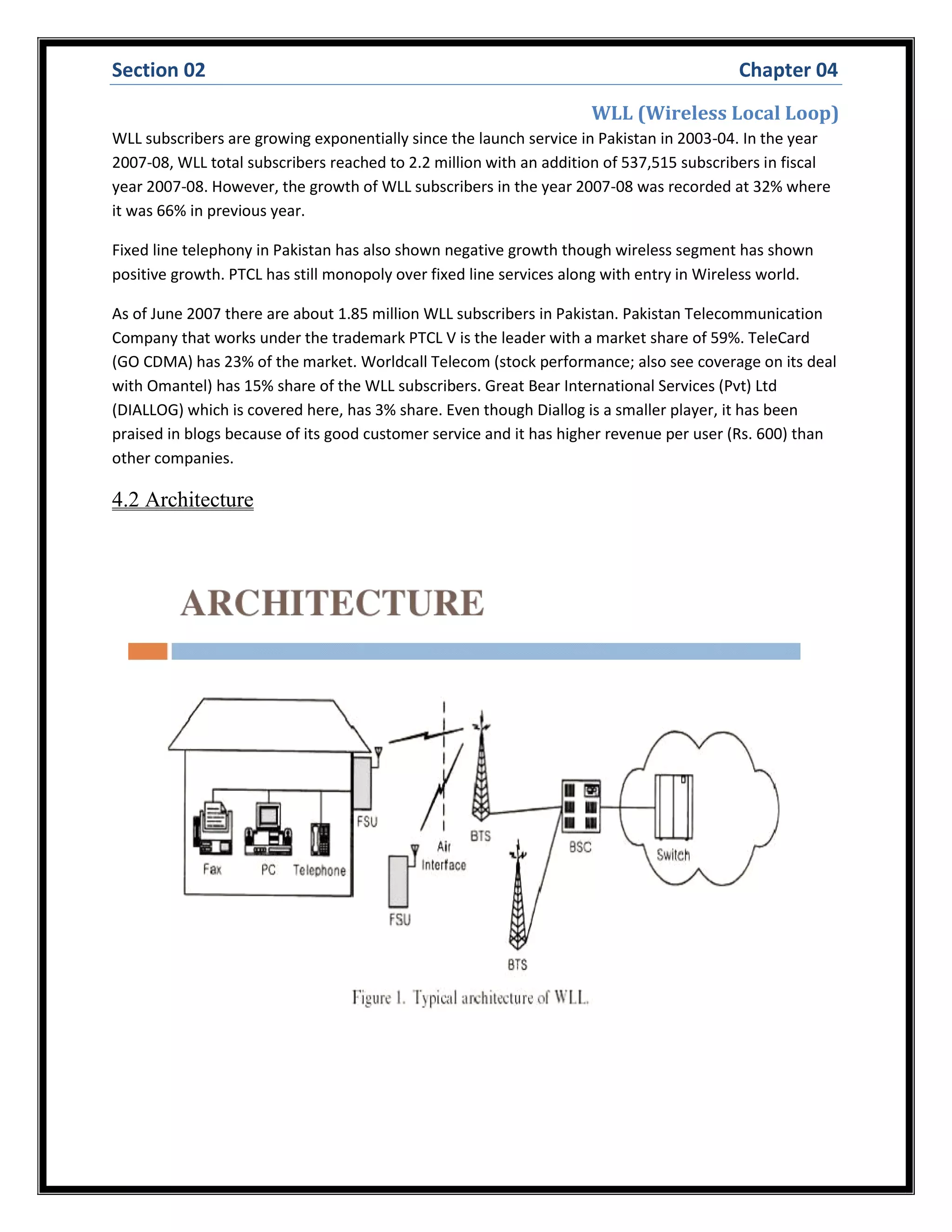
![Section 02 Chapter 04
WLL (Wireless Local Loop)
In addition to wireline line operations, PTCL also provide fixed line service through its countrywide
CDMA based WLL (Wireless Local Loop) network, under the VFone brand name. In the Internet segment,
PTCL provides fixed broadband through conventional copper wire & FTTC and wireless broadband based
on EvDO Rev A and B technology with the brand name of EVO.Ptcl has also introduced a 3G tab. In the
cellular segment, the second largest cellular provider in Pakistan, Ufone based on GSM 800/1900
technology, is also a wholly owned subsidiary of PTCL.[4] In addition to these services, PTCL also offers
some of the world's first commercial HD TV services based on IPTV with the brand name of Smart TV and
home surveillance and alarm over broadband under the brand name iSentry. PTCL is also part of the
consortium of three major Submarine communication cable networks: SEA-ME-WE 3, SEA-ME-WE 4 and
I-ME-WE. PTCL offers Pakistan fastest WiMAX connection EVO Wingle at 9.3 Mbps.
Various WLL technologies and deployment options should be evaluated in terms of the following:
Population density of the service area
Connection cost (i.e., equipment and installation)
Level of penetration
Whether the country/area served is developing or developed](https://image.slidesharecdn.com/heraptcl-150414000028-conversion-gate01/75/Ptcl-Internship-Report-33-2048.jpg)
